Grand Hotel Brioni Opens in Pula, Enriching Istrian City's Tourist Offer
May the 7th, 2022 - The Grand Hotel Brioni has opened its luxurious doors in the much loved Istrian city of Pula, enriching the area's overall tourist offer and providing its guests with stunning views over the nearby Brijuni islands, after which the facility is named.
As Poslovni Dnevnik writes, the Grand Hotel Brioni has just opened in the City of Pula and is ready to receive guests after a highly detailed renovation and decoration process which made it one of the largest investments in Croatian tourism, worth over 34 million euros. This luxury hotel has 227 rooms and is part of the Arena Hospitality Group's enviable portfolio. Such an investment will raise the tourist offer of Pula and the whole of Istria to an even higher level, and significantly enrich the Croatian tourist offer as a whole.
This year, the famous Pula hotel is celebrating its 50th anniversary, and throughout history it has been one of the leaders in the hotel industry in Pula and Croatia. With this investment, the Grand Hotel Brioni received a unique and modern interior and exterior design, and the first guests have already been announced. The total area of the hotel spans a huge 21,000 square metres with about 27,000 square metres of landscaped exterior with oases for relaxation as well.
The exclusive feeling the facility offers is the result of carefully planned decoration, imbued with refined elegance, grey with blue details accompanied by the warm tones of wood, artistic and marine/coastal details. For the decoration of each room, works by local artists have been selected that give the impression that each room is a small art residence of sorts. The Grand Hotel Brioni is also well equipped with a system of smart hotel rooms that is in line with the latest trends and technologies. Guests can check in online and room doors are unlocked with a digital key via their own smartphone.
The City of Pula organised a lunch on the occasion of the Day of the City of Pula in the Grand Hotel Brioni on the opening day, which was also attended by the President of the Republic of Croatia Zoran Milanovic. On the occasion of the opening, Reli Slonim, the President of the Management Board of Arena Hospitality Group stated the following:
"Brijuni is an internationally attractive destination and we're pleased to be able to welcome guests in honour of one of the most beautiful Adriatic gems in this special ambience of the newly renovated Grand Hotel Brioni, which boasts a rich history. We've kept the best of the past so the quality architecture and exterior of the hotel has remained the same, but the hotel has been completely refurbished.
Guests can enjoy the luxurious furnishings and each room is equipped with the latest technology. The hotel has several conference halls, which can be adapted to the needs of congress tourism and various business and social events. Providing the perfect destination for rest, relaxation and enjoyment, but also for corporate needs, the Grand Hotel Brioni will be open all year round. Our goal is to provide permanent jobs for all 230 hotel employees, and we plan to further expand our team as time goes on.''
The Grand Hotel Brioni is preparing a top gastronomic offer for guests from across the rest of Croatia and the world, backed by an exceptional culinary team led by chef Luka Jukic, and the hotel has as many as 4 restaurants. In the relaxation areas, guests will get to enjoy the best numerous beauty treatments, massages, an indoor pool, a hot tub and saunas. With a beautiful view of the nearby Brijuni islands, the imposing infinity pool which is around 60 metres long is perfect for a hotel which will soon reach the very top of the tourist map of Croatia.
For more, check out our travel section.
Construction of Three New Fazana Hotels Planned, Locals Displeased
April the 5th, 2022 - The construction of three more brand new Fazana hotels are planned as this beautiful part of Istria is set to place itself even more firmly on the tourism map. Some, however, are far from pleased with the plans.
As Morski writes, there could be three more new Fazana hotels constructed within a distance of 200 metres. The third hotel is planned on a municipal plot spanning 2,200 square metres located on the very waterfront. That plot is set to on sale next year at a starting price of 1,200,000 euros.
''SDP councilors are the ones who bear full moral responsibility for these apartments and hotels that will irrevocably change everything that makes us love Fazana today,'' said opposition councilor Lidija Udovicki.
A few days ago, we reported that two new Fazana hotels with a total capacity of up to 350 beds are planned to be built on the very waterfront, but it was established that this was incomplete information. Readers of the local Istra24 portal warned that, after the latest changes to the spatial plan and right in the centre of the waterfront, the construction of another hotel which would be 15 metres high and with a capacity of 75 beds was planned.
This allegation about the existence of the third plot on which the hotel is planned, was also confirmed by the mayor of Fazana himself, Radomir Korac.
''Next to Badel is a municipal plot which spans 2,200 square metres in total. In the earlier plan, there was an activity called K1, which is a market or something very similar. However, we estimated that there was no place for a market there. The sixth amendment adopted by the municipal council was also marked T1, which is a hotel,'' Korac went on to explain.
The plot will go on sale next year at a very high price of 550 euros per square metre, and Korac expects that there will be a huge interest in that plot as well, and that it could achieve a higher price than this one in the tender. In the calculation, the starting price for a plot of 2,200 square metres would be the aforementioned 1,200,000 euros.
That would mean that, on a mere 200-metre stretch, Fazana would have three new hotels in the near future: one boasting 195 beds owned by Aleksandar Dzombic, one of 75 which would be mostly on the municipal plot, and a third, boasting 150 beds, which would also be on a municipal plot that will soon go on sale for at least two million euros.
''Six changes to the spatial plan in a very small area next to the old town and on the first row to the sea, enabled the construction of as many as 120 apartments and three new Fazana hotels. I'd like to point out that all SDP councillors voted for this megalomaniacal and devastating plan without any discussion. They're the ones who bear the full moral responsibility for all these apartments and hotels that will radically and irreversibly change everything that makes us love Fazana today. The entire opposition voted against these plans,'' said Udovicki in protest.
''When looking into the minutes of the aforementioned session, it's evident that the SDP councillors didn't participate at all in the discussion on any of the changes to the plan that are evidently and extensively in favour of the investors,'' she added.
''Many key things were agreed upon and then changed behind the scenes. The public debate didn't accept the peoples' remarks on the oversising of these hotel projects, but the numerous and extravagant demands of the company "Terra-Rex", represented by Nebojsa Dzombic, the brother of Aleksandar Dzombic, were readily adopted. For example, one such request concerned the closure of an unclassified road leading to what is currently a car park. Dzombic cited the need to secure and close the whole area for himself in order to develop the tourist complex,'' concluded Lidija Udovicki critically.
For more, make sure to check out our business section.
Underwater Exploration: Istria to Brand Destinations as Best Spots for Snorkeling
March 2nd, 2022 - A map of the seabed containing all the best spots for snorkeling is in the works
Did you know that there’s no specific word for snorkeling in the Croatian language? Now that you do, it shouldn’t come as a surprise that so far, not much thought has been given to the prospect of branding destinations as attractive snorkeling spots.
As a low-effort activity that doesn’t require any special skills or a full set of scuba diving gear, snorkeling appeals to all generations. It would make sense for Croatia, a country where tourism promotion is largely based on the sun and sea, to promote destinations that are ideal for this type of underwater exploration.
Things are looking up, though, as the Administrative Department for Tourism of Istria County, along with numerous tourist boards in the region, embraced an initiative to create a map of the seabed which would feature all snorkeling-friendly locations. The initiative is seen as a good opportunity to develop a new tourism product on the Istrian peninsula.
A round table was held yesterday, bringing together representatives of the tourism sector and experts involved in marine conservation, writes Glas Istre. Various opinions were voiced at the meeting, concerning all the things that need to be taken into consideration when developing this product. It was emphasised that it’s important to find the right balance between the potential benefits of such an initiative and preservation of the sustainability and biodiversity of our waters.
‘The maritime area of Istria is an important natural resource that we need to preserve, whereas on the other hand it has exceptional potential for tourist valorization. It is for these reasons that the initiative was launched to create a new tourism product based on the principle of sustainable and responsible tourism development’, said Nada Prodan Mraković, the head of the Administrative Department for Tourism.
The round table was organised as a sort of professional brainstorming, aiming to ensure that development of this product is well thought-out so that any potential issues and mistakes could be avoided.
‘The sea is a very sensitive environment, and we can and must promote the importance of its conservation and protection as we develop this new product’, said Prodan Marković.
Director of the Istria County Tourist Board Denis Ivošević brought attention to the importance of media promotion that Istria as a destination receives by generating new tourism development projects.
‘It is very important for every tourism development project to be well-communicated. The project we are talking about today is definitely very creative and innovative, and since it has a direct link with sustainable and responsible development, it’s definitely a project that could be met with approval of the public’, said Ivošević.
The person who came up with the initial idea is Barbara Unković, owner of the Underwater Affair company and the round table moderator. As she says, diving has been a passion of hers for three decades.
‘My life story is intertwined with the sea, and the experience of working with tourists has shown me that it’s difficult to explain to people where you’re taking them diving. That’s why I started drawing maps of the seabed to make the task easier. The concept of a project related to snorkelling came to me during lockdown, when the idea was born to use maps to introduce more people to our underwater environment and make them interested in it’, she said.
The idea was shared with institutions involved in tourism development in Istria, and it drew a lot of interest thus far. Some tourist boards took steps to develop this particular segment of tourism on their own, Melita Peroković of the Fažana Tourist Board being one of the pioneers.
‘We’ve recognized the potential of snorkelling when it comes to promotion of our extremely rich history, cultural heritage and tourism offer. The Archaeological Museum of Istria (AMI) recently conducted research at a hook-shaped ancient Roman pier which, after the sea level rose more than two metres over the last two millennia, now lies submerged in the area in front of Villa San Lorenzo. Together with the AMI, we researched how this archeological site could be valorised for tourism purposes through the means of snorkeling, and we were the first in Croatia to receive approval from the Ministry of Culture to allow snorkelling above a protected cultural asset’, said Peroković.
Istrian Gastronomy Celebrated in Promotional Film ''Good Mood / Good Food''
January 24, 2022 - Through the ''Authentic Istria'' initiative, the region's tourist boards have jointly presented the promotional film ''Good Mood / Good Food'', highlighting the most characteristic and valuable elements of the Istrian gastronomy, both its unique ingredients and traditional recipes.
The premiere of the promotional film Authentic Istria: Good mood / Good food was held in Pazin, which includes a part of the gastronomic offer of the Tourist Boards of Central Istria, the City of Buzet, and the municipalities of Barban, Kanfanar, Svetvinčenat, and Žminj Labin companies Level 52, reports HrTurizam.hr.
The backbone of the film is the rich Istrian gastronomy and good mood that Istrian local food encourages. The film thus visually presents the ambassadors of Istrian cuisine: truffles, prosciutto, wine, čripnja, cheese, oysters, homemade pasta, desserts such as Cukerančić and Christ's Crown, and others.
In the film, the viewer meets the hosts who are in the field, in their catering facilities and production units to show the originality and quality of local food offered in central Istria. In addition to gastronomic experiences, there are other unique experiences to offer: sleeping on straw, driving through beautiful landscapes, tasting fresh food in the field or on a boat, lunch among the vineyards, socializing with the hosts, etc.
Sanel Isanović, director of the Level 52 company and the film's author, emphasized that with this film the desire was to go a step further and tell the story of Authentic Istria, which will first create good feelings and connections between viewers and destinations and create a desire to come.
"The whole film is designed as a journey that begins with a couple of tourists waking up on a straw bed, rich in panoramic shots of central Istria, sun-drenched hills, fields with hay bales, forests, and shots of beautiful scenery," explains Isanović.
As the film's producer Bianca Dagostin pointed out, over 40 local extras took part in the film, and the collaboration with local producers and caterers who significantly helped in the realization of the film was exceptional.
The promotional film that celebrates Istrian gastronomy was published in Croatian and English, and realized within the activities defined by the Agreement on the Association of Tourist Boards of Cities and Municipalities from Central Istria entitled "Authentic Istria". The realization of the film was financed by the Fund for United Tourist Boards, Croatian Tourist Board.
For more, check out our dedicated travel section.
10,000 Tourists in Istria During Christmas and New Year Holidays
December 31, 2021 - About 10,000 tourists in Istria County will celebrate the New Year in fifteen open hotels and two camps on the Istrian peninsula. The Istria County Tourist Board reveals that this is a 3x increase in guests compared to last year.
"Almost ten thousand guests are currently vacationing in Istria, which is three times more than last year when 3,750 guests stayed during the Christmas and New Year holidays, but twice less than the record 2019 when 21,500 tourists stayed in our county," says Istria County Tourist Board director Denis Ivošević, as reported by HRT.
He adds that he is satisfied with the number of guests because "if the epidemiological situation allows it, it is the announcement of a good tourist year in 2022."
During December, 105,000 tourists stayed in Istria, which is 27 percent less than two years ago when there were 142,166.
Most guests stay in Poreč and Rovinj, with domestic tourists in the lead, followed by guests from Slovenia, Germany, Austria, and Italy. According to the Istria County Tourist Board, most guests stay in hotels, almost 60 percent.
Arena Hospitality Group reports that during the winter months, including New Year's Eve, they opened the Park Plaza Belvedere hotel in Medulin and the Arena Grand Kažela camp in Medulin. They expect about a thousand guests who will stay two to three days. Their guests are mainly from Austria and Slovenia, and this year, they noticed increased interest from domestic guests.
Following the epidemiological situation and prescribed measures, Valamar will organize a unique holiday program for guests of its hotels and camps, such as live music and DJ performances, in facilities that operate during the Christmas and New Year periods.
During December and the holiday season in Rovinj, Maistra's Grand Park Hotel Rovinj, Lone, Adriatic, Eden, Amarin, then Pineta, apartments Riva and camping Porto Sole in Vrsar were opened.
For more, check out our dedicated travel section.
Lorena Boljuncic Develops Idea Istra, Focuses on Cultural Heritage
November the 27th, 2021 - Entrepreneur Lorena Boljuncic from Pula was named the most innovative Croatian entrepreneur this year in the selection of the Women in Adria network. Her entrepreneurial story, which focuses on her Idea Istra concept, is an interesting one.
As Poslovni Dnevnik/Darko Bicak writes, Lorena Boljuncic’s story is one of those that inspires and gives other women the courage they might be seeking to do something brave even when it seems impossible.
From a secure job in an international company, Lorena switched to the far less stable, far more challenging waters of entrepreneurship and launched several successful projects in Pula with her agency for the development of new cultural and tourist products, Idea Istra.
“My entry into private business wasn't accidental, it was a conscious decision. After years of working in international companies, I felt I was ready for entrepreneurship. The different things that interested me during my life finally came together and I knew what area of work I wanted to create something in,'' Lorena Boljuncic said.
Although culture is usually not a field, at least not here in Croatia, to which business is connected, Lorena took culture as the focus of her business development. “I was born in Pula, which is rich in historical heritage, I studied art history and I was always interested in how we talk about it and how we present our culture and history... how we present our destination through cultural heritage. During and after college, I travelled along the Croatian coast and collected materials/brochures from our historic cities. Culture has always been just an ornament, a beautiful picture in one general brochure, without much content. The museums had classic exhibits which were several decades old, with many artifacts, and without a story, without something whole, so few people entered, and no one cared about it,'' explained Lorena Boljuncic.
She added that she also realised that Croatia as a tourist destination has many great opportunities to attract guests who aren't only interested in the sun and the sea, but also travel because of cultural heritage, that this can be a reason to come and that various cultural and tourist products in a given destination must be made profitable. She says there are examples of this all over the world, especially here in Europe.
"Today, in general, everything is changing rapidly, we have an increasingly extensive network of heritage interpreters, great people who create interesting content, interactive museum exhibits are being created, cultural monuments are being restored. However, I have to say that there are a lot of projects that lack an entrepreneurial approach where you want to have as many guests as possible, making money from it so that you can reinvest and create new content. A lot of museums are still "waiting" for something to happen to them, for some money to come, instead of making a move on their own. On the one hand, there's certainly a lack of knowledge in cultural management, and on the other hand, the owners, the public administration, don't ask for specific goals to be met from the heads of institutions,'' she stated.
Her most famous project is the House of Istrian Olive Oil, which is the first project, and not only in Croatia, which moves away from the classic settings with a lot of artifacts and gives a wide approach to knowledge of olive growing.
“There's certainly an interesting historical story about the development of olive growing in Istria, from the Roman period until today. Modernity is quite well represented through the display of the assortment, which all olive growers must pay attention to in order to obtain quality extra virgin olive oil, which we learn through chemical and sensory analysis, etc. After that, each guest goes through a guided tasting session - a form of education where, according to international standards, we learn different categories of olive oil and how to recognise them. Our guests are incredibly surprised when they realise that most of what they buy in their stores isn't real extra virgin olive oil, and that quality and healthy olive oil has different flavors and aromas,'' Lorena Boljuncic noted.
She explained that her idea behind Idea Istra is a more transformational form of the presentation of cultural heritage, where guests not only get better acquainted with part of the cultural heritage and the present, but also learn something new that benefits them in everyday life.
For more, check out Made in Croatia.
New Port Opens in Trget, Istria
ZAGREB, 26 Nov 2021 - A new port with 295 refurbished berths for a total value of HRK 10.5 million was officially opened on Friday in Trget, Istria as the most organised port in the remit of the Rabac Port Authority.
During the opening ceremony it was said that the Ministry of the Sea, Transport and Infrastructure financed the project with HRK 8.4 million and Istria County provided HRK 2.1 million.
In the wake of an accident involving the Liberian ship Fidelity in 2018, when oil leaked out in the Bršica port and the entire Raša Bay and the Trget port were polluted, it was necessary to remove the old berths and clean up the bay. This clean-up cost Istria County HRK 195,000 and Raša Municipality HRK 92,000.
The director of the Rabac Port Authority, Antonela Mohorović Kožuh, recalled that incident and said that today that episode was brought to a happy end.
"With the assistance of the Civil Protection Authority, with a lot of effort, we managed then to organise and deal with the damage. At the end of it all, we have a new port in Trget. Once a small, ugly and abandoned port, we now have 295 refurbished berths. Trget port is now the most organised port in the area in the remit of the Rabac Port Authority and it makes us all proud," underscored Mohorović Kožuh.
She added that next year a moor would be built in Trget and that documents are being prepared to refurbish the Sv. Marina port.
For more on travel, CLICK HERE.
Discovering Authentic Croatia's Secrets With Seoski Tourism
November 4, 2021 – Village tourism or countryside tourism - Seoski tourism in Croatia - offers authentic, traditional experiences. Aleksandra Kuratko, secretary of Udruga ruralnog turizma Hrvatske (Croatian Rural Tourism Association) tells us more about it, and their work to help facilitate it
Croatia's visitor offer is evolving and expanding. There are exciting aspects of authentic Croatia to be discovered. Away from the beach, villages inland often look remarkably similar to how they did one hundred years ago. There, crops are grown and produce made in ways passed down through generations of families. And, in some lucky instances, these family farmers are willing to open their doors, invite you inside and show you how they live.
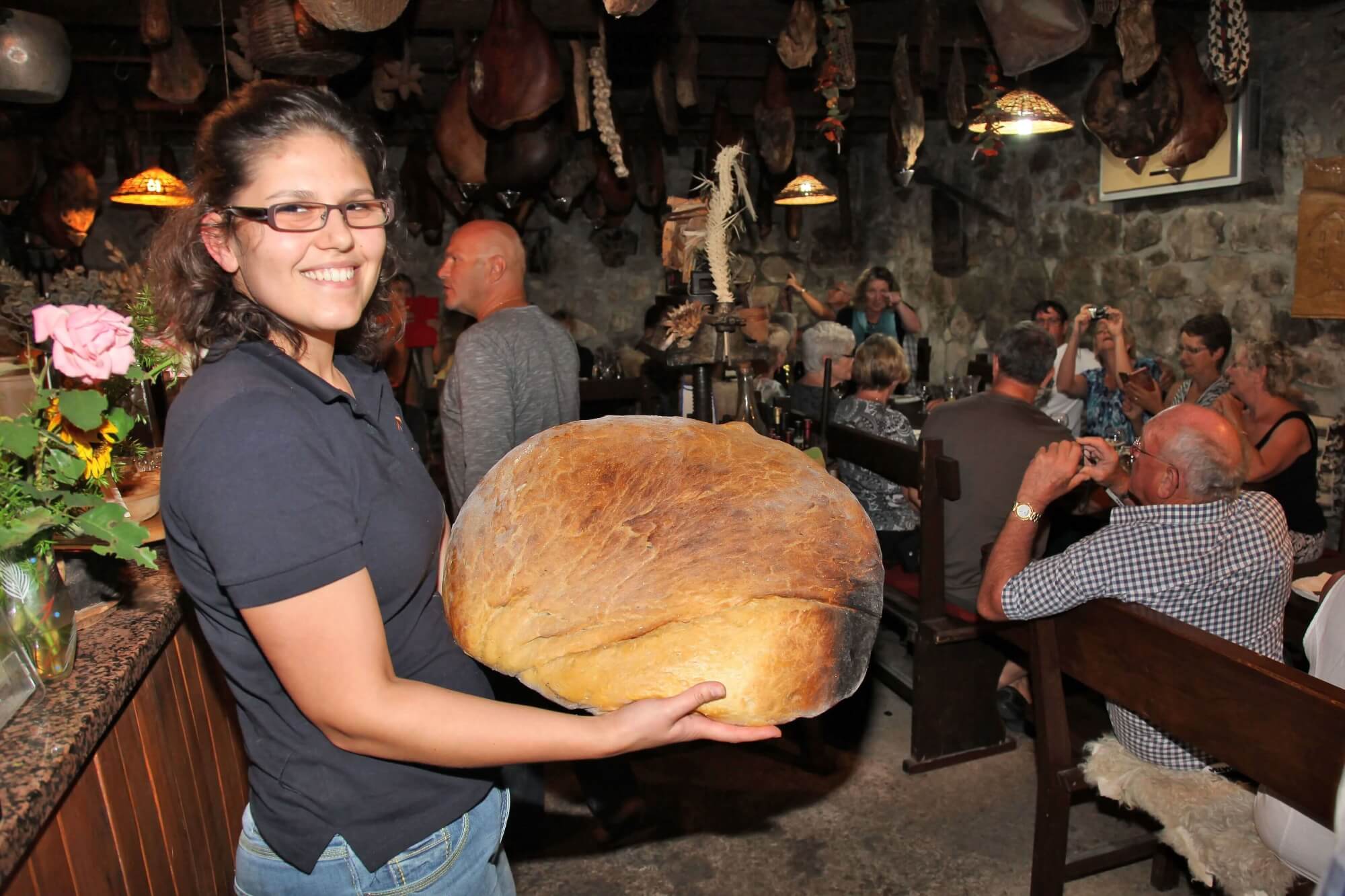 Bread from the peka at Agroturizam Antunović on Pelješac
Bread from the peka at Agroturizam Antunović on Pelješac
Seoski Tourism – translated as either village tourism or countryside tourism – is just that. Family farms that offer hospitality. These are some of the most homely and most welcoming accommodation experiences you can have in Croatia. Offering sights and sounds, tastes and flavours that you can't find anywhere else, visits or stays in Seoski Tourism places have long been loved by locals for weekend breaks or holidays outside peak summer. But, increasingly, these authentic Croatia experiences are being discovered by international visitors.
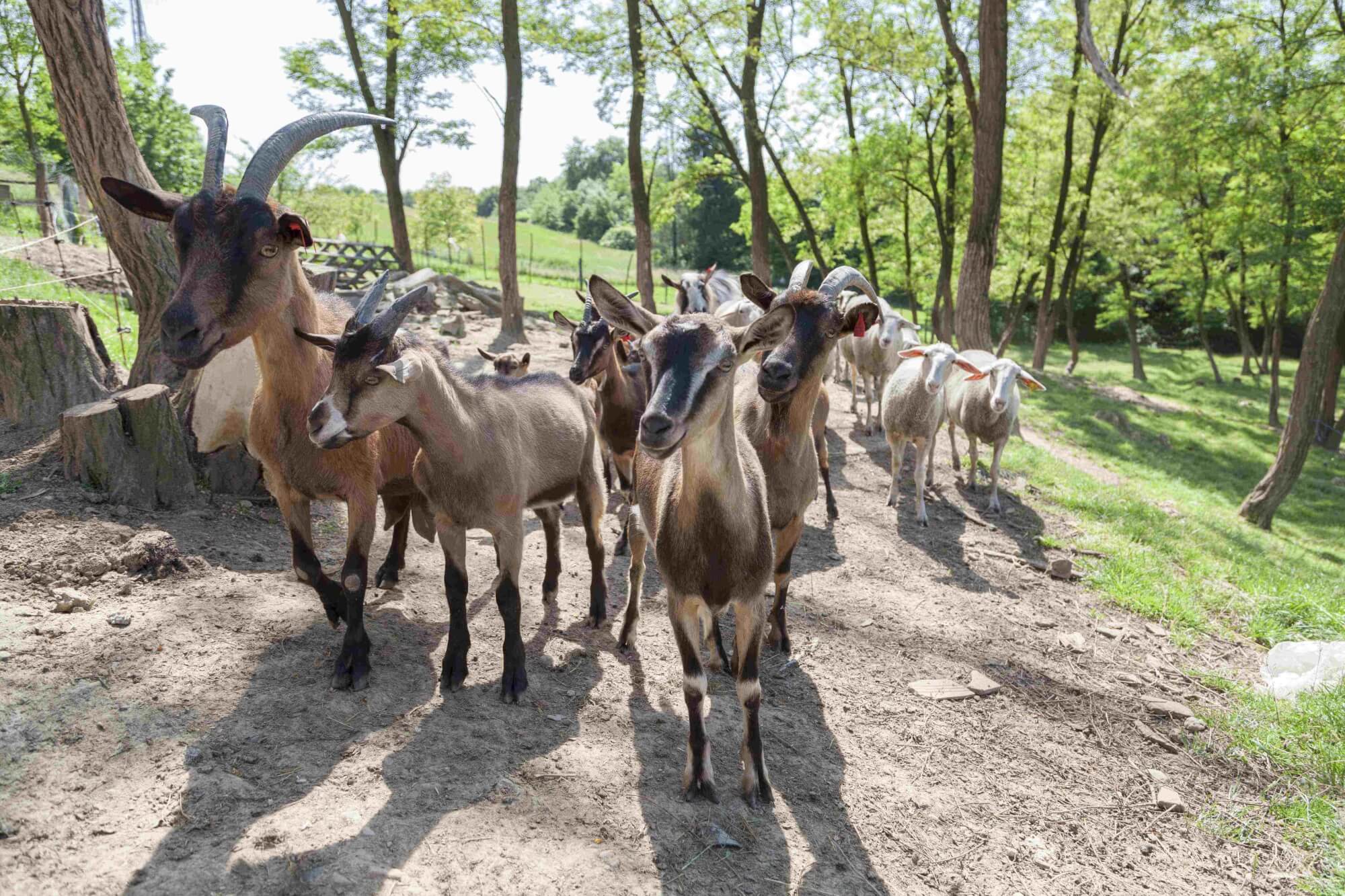 Moslavina goats at Kezele family farm © Davor Konjikušić
Moslavina goats at Kezele family farm © Davor Konjikušić
One institution trying to facilitate the growth in interest is Udruga ruralnog turizma Hrvatske - Croatian Rural Tourism Association. Since it was formed in 2016, they have tried to bring together Croatia's family farm hosts, to promote them and educate them, and to build bridges between these independents and tourist boards, tourist agencies, educators and even the wider world outside Croatia.
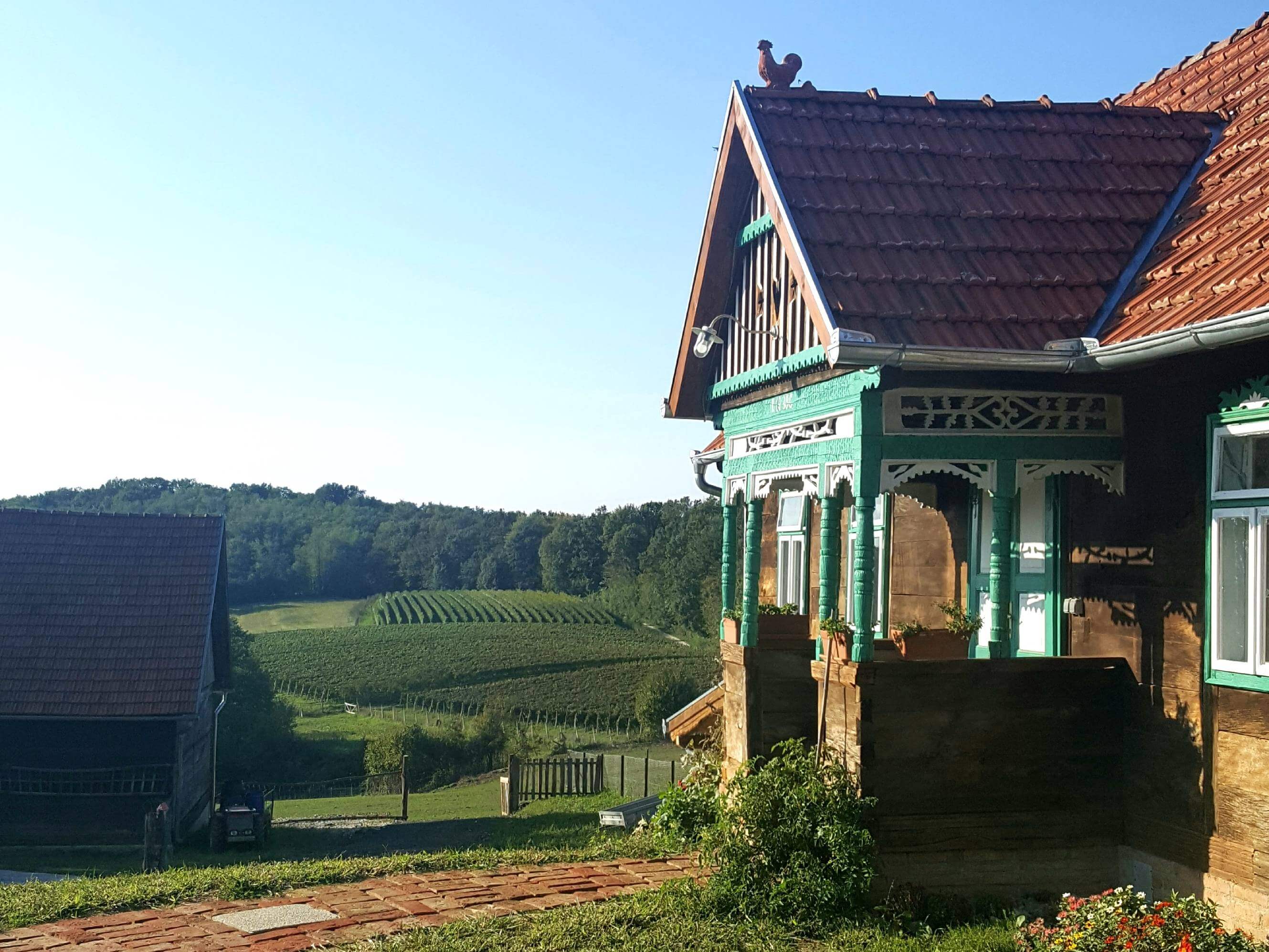 Seoski turizam Kezele in Šumećani, on the border of Zagreb County and Bjelovar Bilogora County © Davor Konjikušić
Seoski turizam Kezele in Šumećani, on the border of Zagreb County and Bjelovar Bilogora County © Davor Konjikušić
Based in Ivanić-Grad, Zagreb County, the Croatian Rural Tourism Association is currently touring the length and breadth of the country, holding workshops with as many Seoski Tourism family farms that will come. And if the farmwork doesn't allow them free time, then they can attend Croatian Rural Tourism Association workshops online.
On the eve of the association's online Seoski Tourism workshops for Central Croatia and Slavonia, TCN interviewed Aleksandra Kuratko, secretary of Udruga ruralnog turizma Hrvatske, to find out more about Seoski Tourism in Croatia.
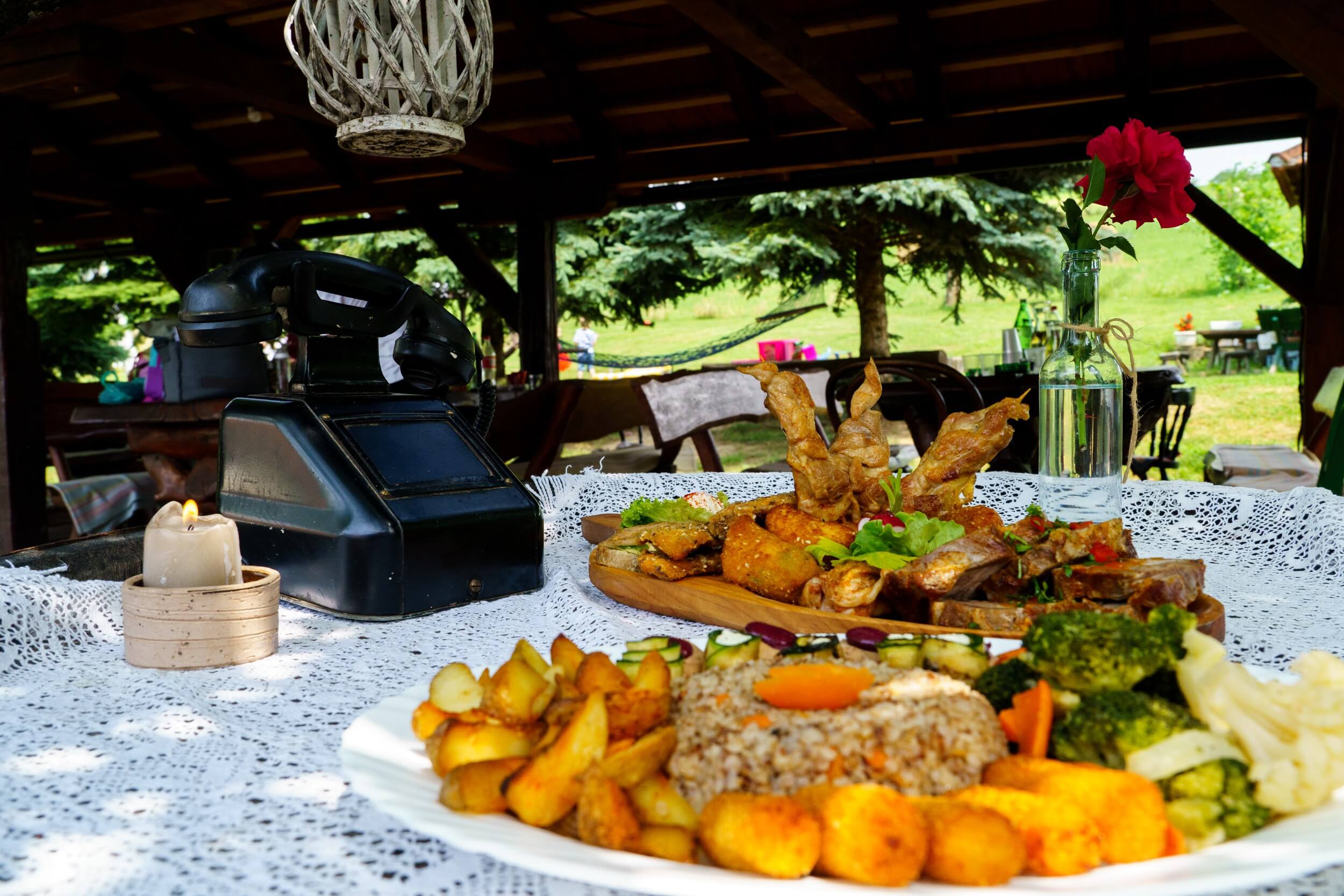 Prigorje specialties at Rakić family farm
Prigorje specialties at Rakić family farm
My name is Aleksandra Kuratko and I am secretary of Udruga ruralnog turizma Hrvatske. As an association, we are 5 years old.
We have 35 members, most of whom are service providers in what we call Seoski Tourism. We also have several tourist boards and two educational institutions as members.
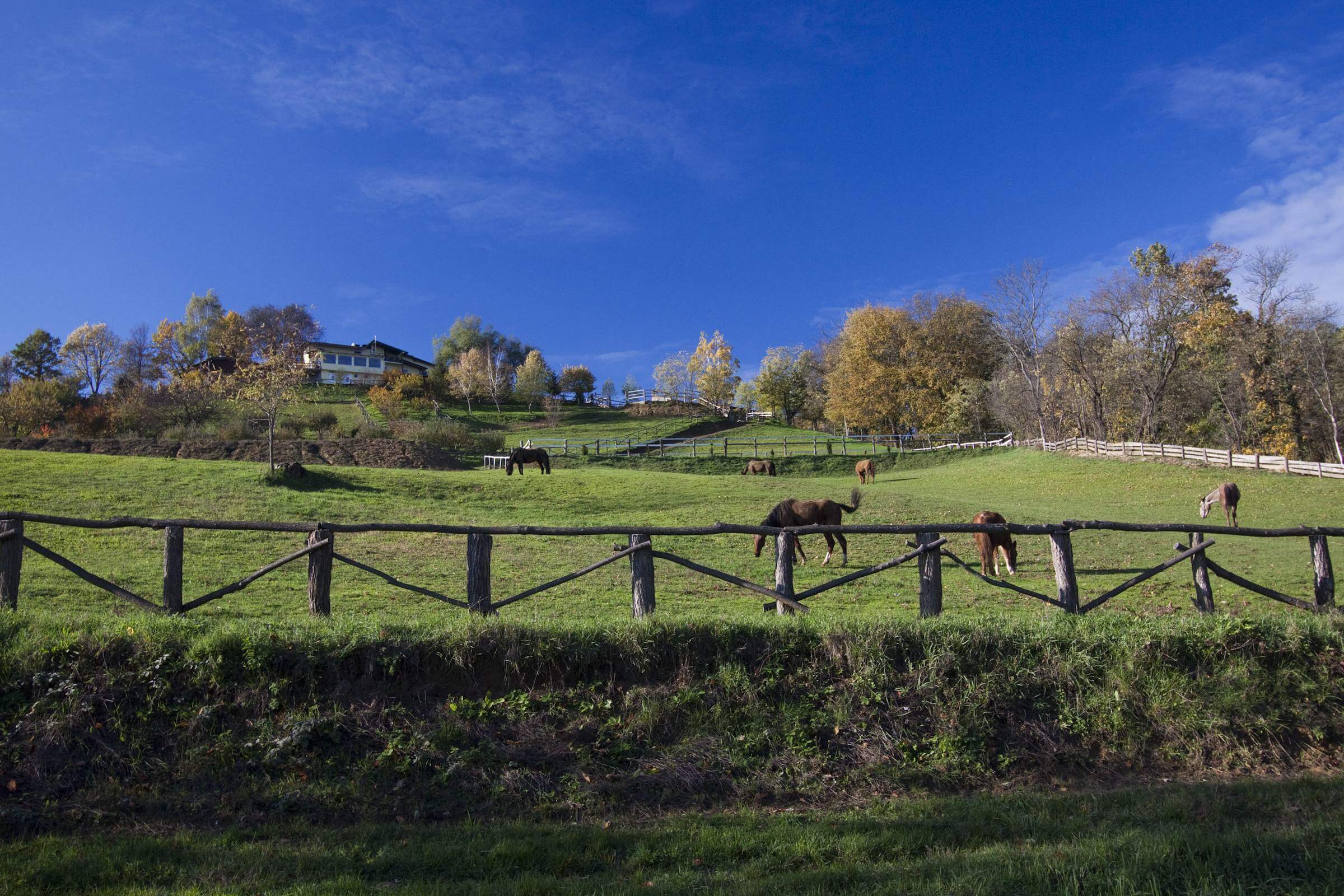 Bilogora horses in autumn at Agroturizam Na malenom brijegu © Vladimir Vlajinić
Bilogora horses in autumn at Agroturizam Na malenom brijegu © Vladimir Vlajinić
Seoski tourism is not quite the same as rural tourism, because rural tourism is many different types of tourism that happen in rural areas. Seoski tourism - which you might translate as village tourism - is quite specific. We assemble people who work in agriculture and who, at the same time, are also offering hospitality. In English, you might call them Farm Stays. Or Agro-tourism – a merging of agriculture and tourism.
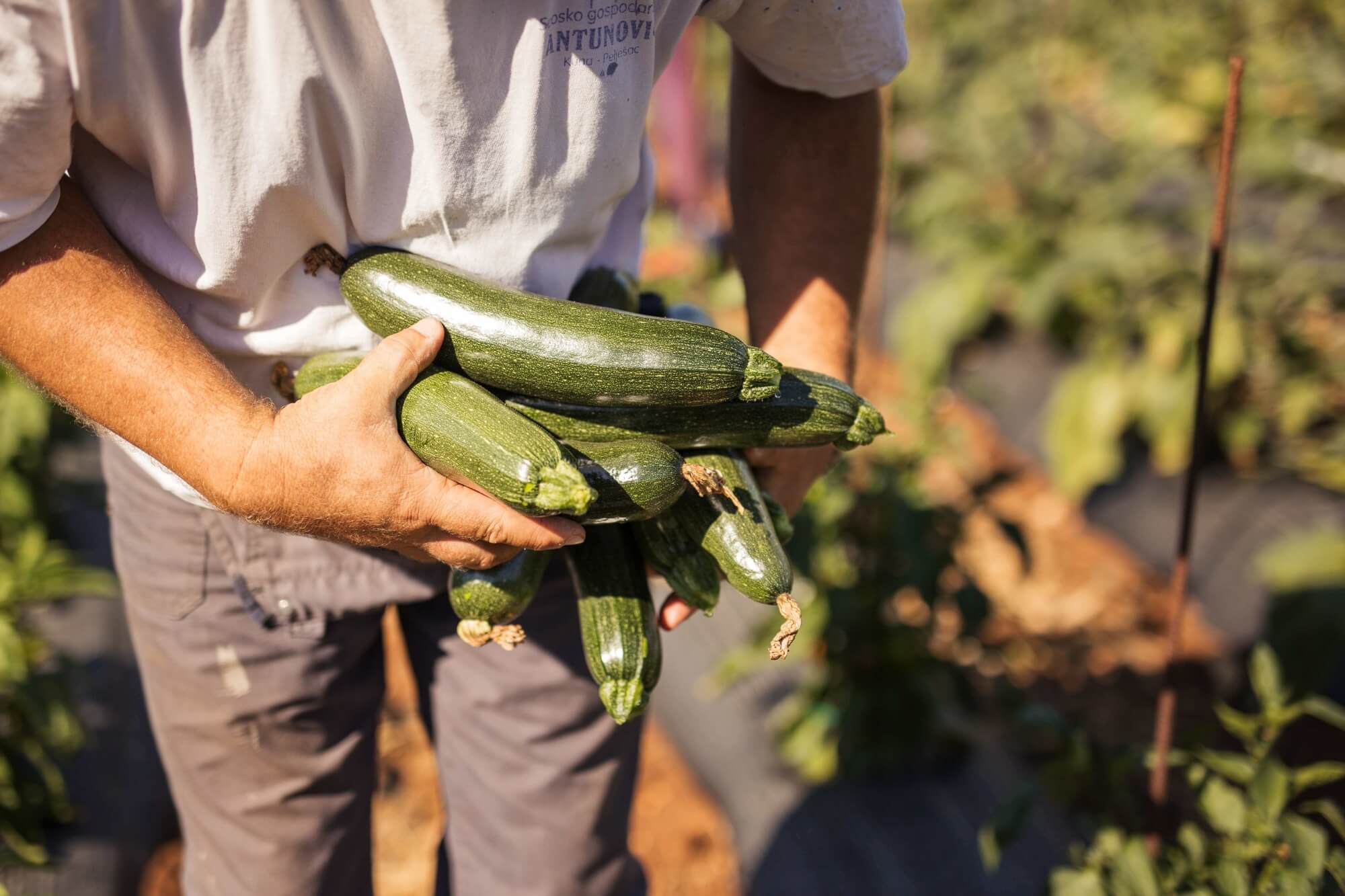 Fresh vegetables at Agroturizam Antunović on Pelješac
Fresh vegetables at Agroturizam Antunović on Pelješac
People who work on agricultural estates often take care of local cultural heritage. For example, they might maintain and renew traditional wooden or stone houses. Many also have etno collections, in which they preserve different objects from their region. Some of these objects might have been used in agriculture and households hundreds of years ago. So, they are preserving the cultural heritage of Croatian villages. This is what we call material cultural heritage. But, there's another kind.
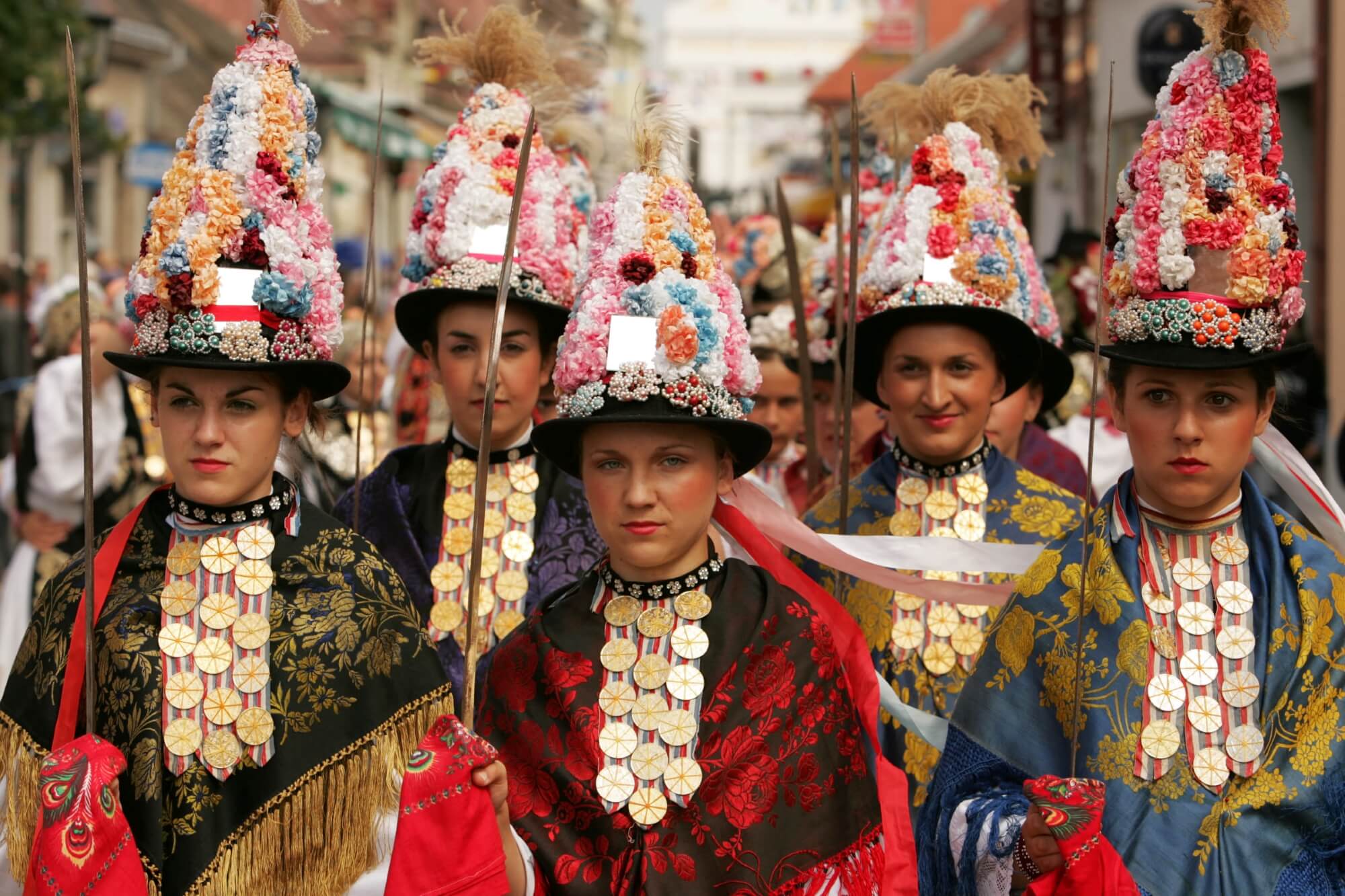 Cultural heritage preserved in one Slavonian village © Mario Romulić
Cultural heritage preserved in one Slavonian village © Mario Romulić
Non-material cultural heritage is also a part. That might be preserving old recipes of traditional, regionally-specific dishes. Or, it might be showcasing the songs and dance of local music.
We are currently running a project which is supported by the Croatian Ministry of Tourism and Sports in which we hold 37 Seoski Tourism workshops in the field all over Croatia. There will also be around 15 online workshops. The workshops are aimed at colleagues who currently operate in Seoski Tourism – they work in agriculture and offer hospitality. Also invited are local tourist boards and local action groups.
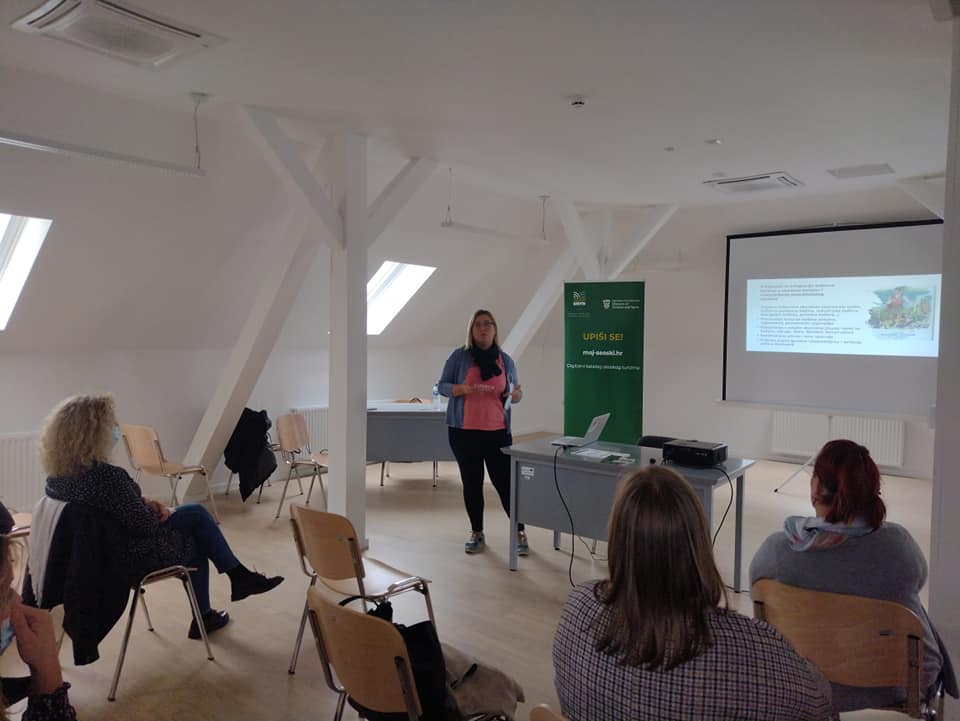 Photo from URTH workshop in Slatina
Photo from URTH workshop in Slatina
So far, we conducted 20 workshops in the regions of Central Croatia, Slavonia and Baranja, and Podunavlje. From next week until the end of the year, we will conduct the workshops in Istria, Kvarner, Lika and Dalmatia. Some service providers were not able to attend earlier workshops, because of work commitments of Covid. So, we decided to also offer access to the workshops online. Tomorrow is our first online workshop for Central Croatia and on Friday it's the online workshop for Slavonia.
These workshops are interactive discussions between our association, service providers and all other stakeholders. We discuss the legislative framework, which can be extremely complex. We talk about new trends in tourism for the post-pandemic era. We also discuss the importance of integrating cultural heritage in digital promotion.
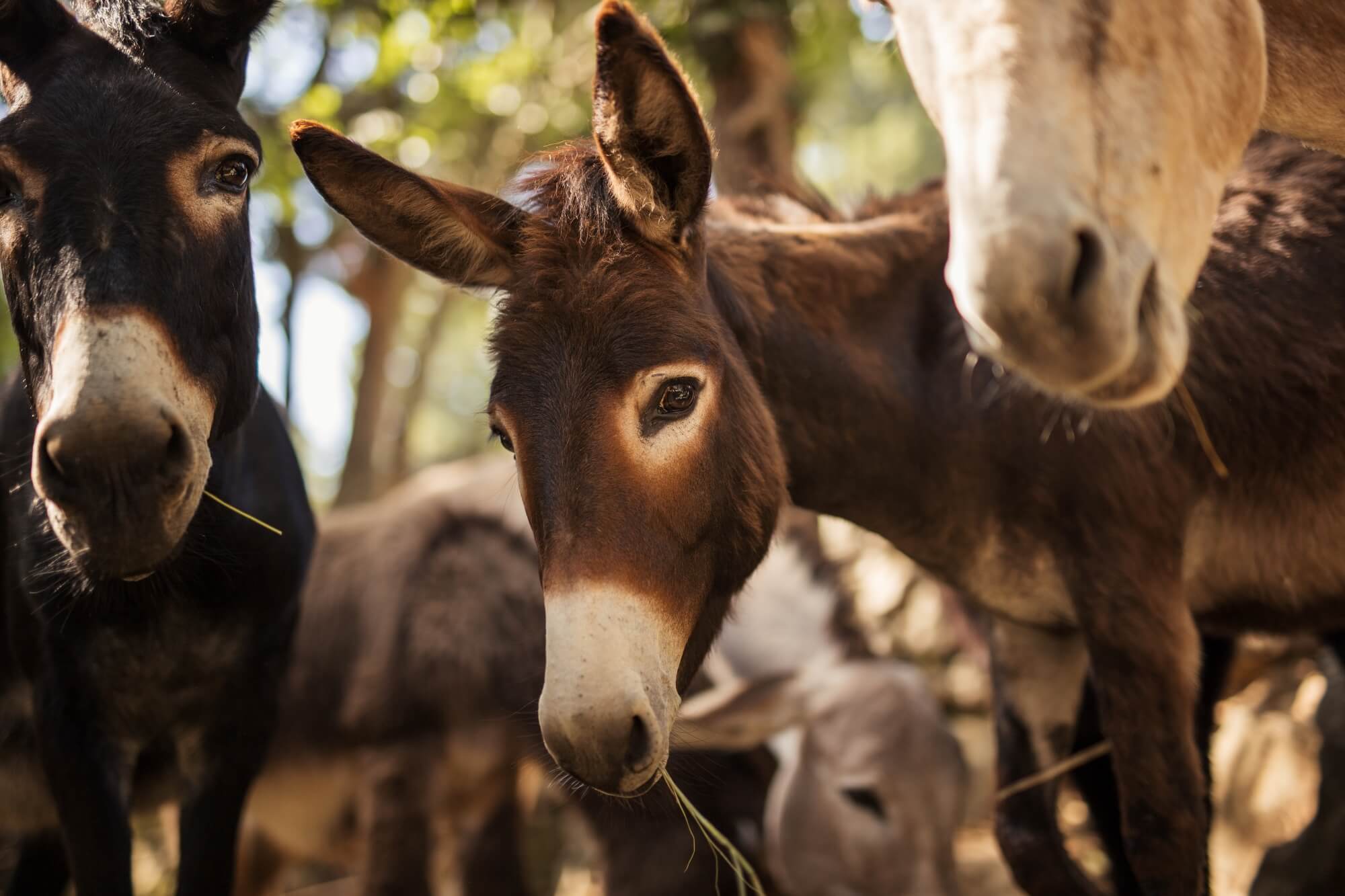 Donkey farm at Agroturizam Antunović on Pelješac
Donkey farm at Agroturizam Antunović on Pelješac
For the legislative framework, we have initiated the formation of a working group for the development of Seoski Tourism, which is now operating in the Croatian Ministry of Tourism and Sports. So, at the workshops, we ask if anyone is having issues. We collect the responses and address them in the working group.
Part of the workshop is the presentation of a new web application of Seoski Tourism, which we have developed with Croatian Ministry of Tourism and Sports. It has two purposes. One is to create a digital catalogue of Croatian Seoski Tourism. You can see region by region some of the Seoski Tourism options – currently around 40, those who have already enrolled.
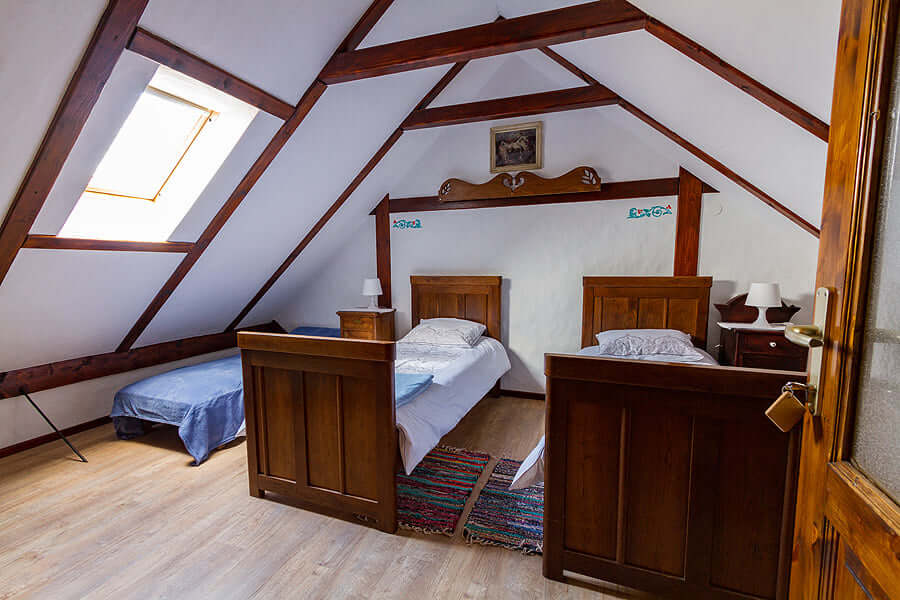 Podravina Etno rooms at Zlatni klas Otrovanec
Podravina Etno rooms at Zlatni klas Otrovanec
A version of the app is currently available on the website of the National Tourist Board. But, they are building a new website. The forthcoming version of the catalogue will likely be more user-friendly with many more functions and options. On the new website, Croatia's Seoski Tourism options will be detailed in many different languages. It should be a great resource not only for tourists but for travel agencies, journalists like you and for educational institutions. That's the reason we are devoting time in our workshops to encourage Seoski Tourism providers to enroll. We are just at the beginning of the process.
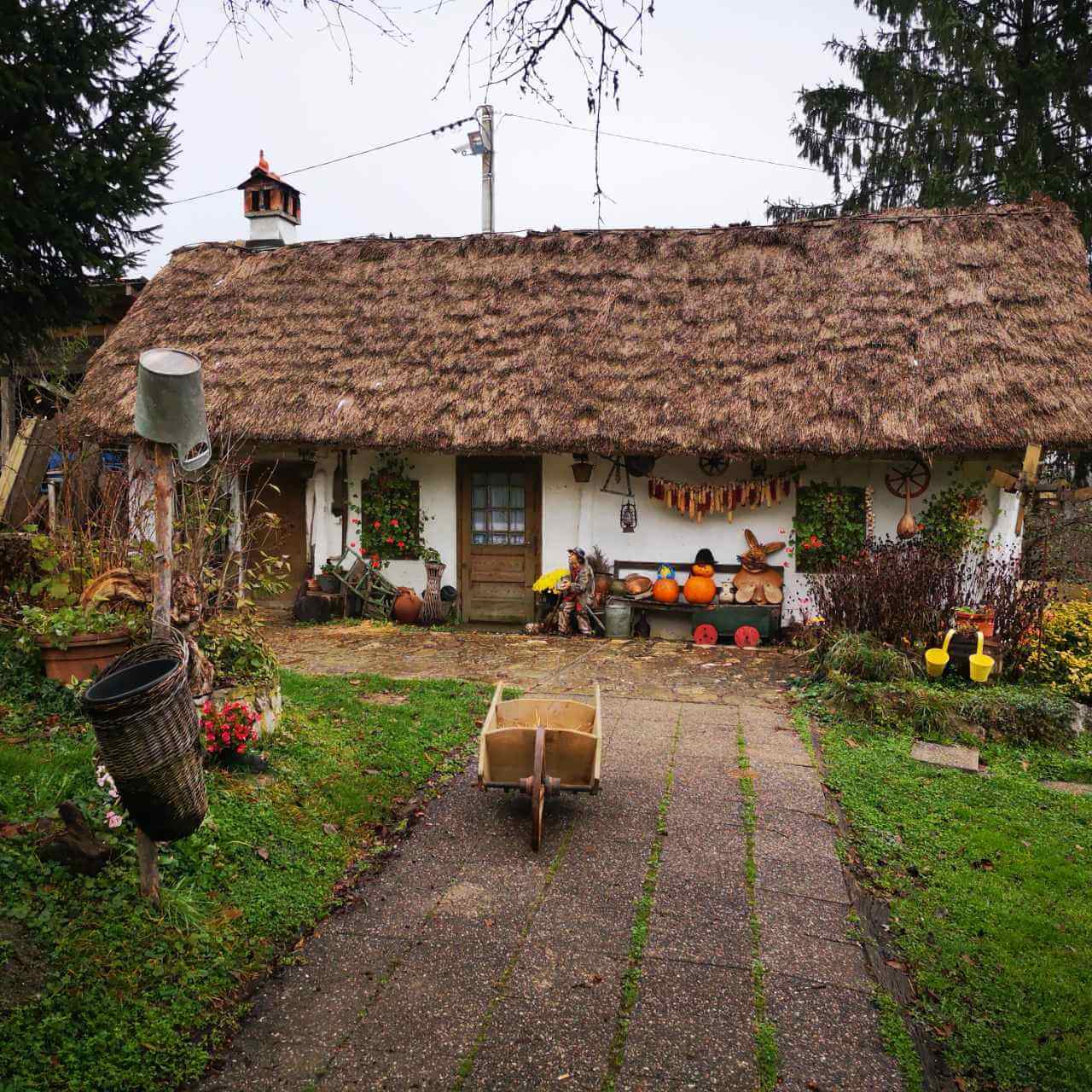 Grešna pilnica in Zagorje © Jasna Podboj
Grešna pilnica in Zagorje © Jasna Podboj
The second purpose of the app is to collect information about the service providers. This info will be used by our working group when defining a Croatian model of Seoski Tourism. So far, we have taken examples from Slovenia, Italy and other countries that are successful with Seoski Tourism. But, these models were entered into our legislative system without fully considering our distinct business and cultural environments. That is now about to change.
We are very happy that, following many years of partially successful advocacy, there is now political will at a ministerial level to really shape things up, to change the laws and regulations in order to facilitate Seoski Tourism. We want to encourage more Seoski Tourism, not to have people from agriculture being turned away because of the difficulty of the process and bureaucracy.
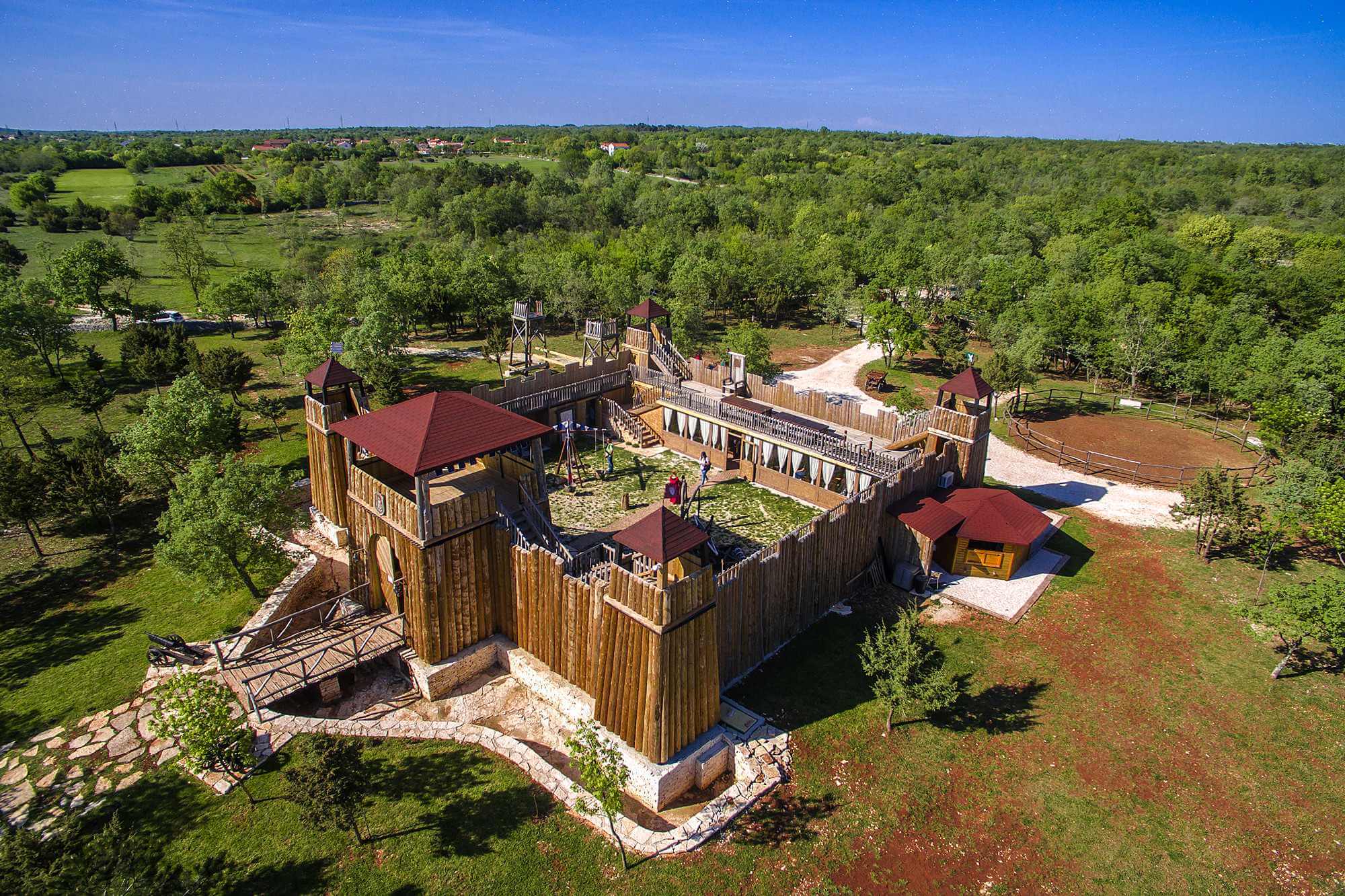 Medieval Theme Park San Michael © Silvia Otočan
Medieval Theme Park San Michael © Silvia Otočan
You said part of the workshops will focus on new trends. What are some of these?
Research has been done by a working group that is developing a new tourism strategy for Croatia. It's called Strategy for Sustainable Tourism to 2030. Under the auspices of this group, a number of research fields have been analysed.
The collected data shows that a huge percentage of tourists are now more inclined to eat locally grown and healthy food. They want to spend their time on estates that are run in accordance with ecological principles. So, they really care about issues like how waste is disposed of etc. They also pay a lot of attention to culture. They are curious to learn exactly how we are living, how we are working and how we produce things. They want to learn about our society and culture. And, importantly, they really care about how they spend their money. Above all, they want to spend money in areas that can help support local communities.
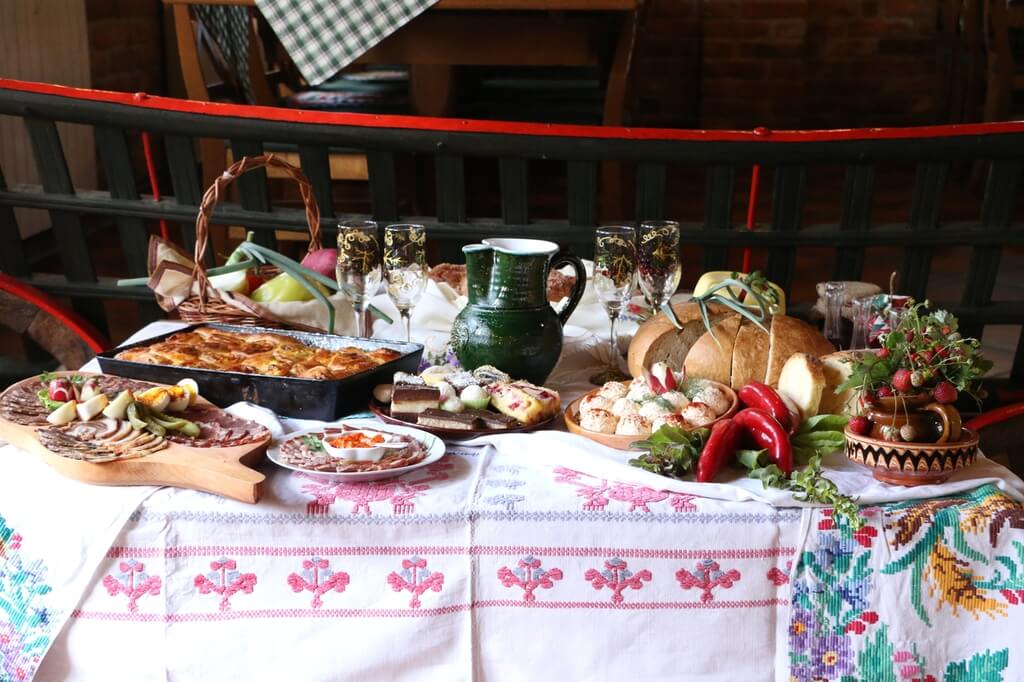 Prigorje Breakfast at Rakić Family Farm
Prigorje Breakfast at Rakić Family Farm
For us, this is really important. Because Seoski Tourism answers these demands to an incredibly high level. We do produce local, healthy food. Not only on the agricultural estates where you can experience Seoski Tourism, but also from their neighbours who just do agriculture. We are concerned with ecology, we protect cultural heritage and the money spent in Seoski Tourism stays in local communities, where it has very beneficial effects.
In the digital promotion part of the workshops we are trying to persuade people about the importance of their online presence. Basically, these days, if you're not online, it's almost like you don't exist. So, we try to explain the importance of having good-quality photos, short videos and a regular online presence.
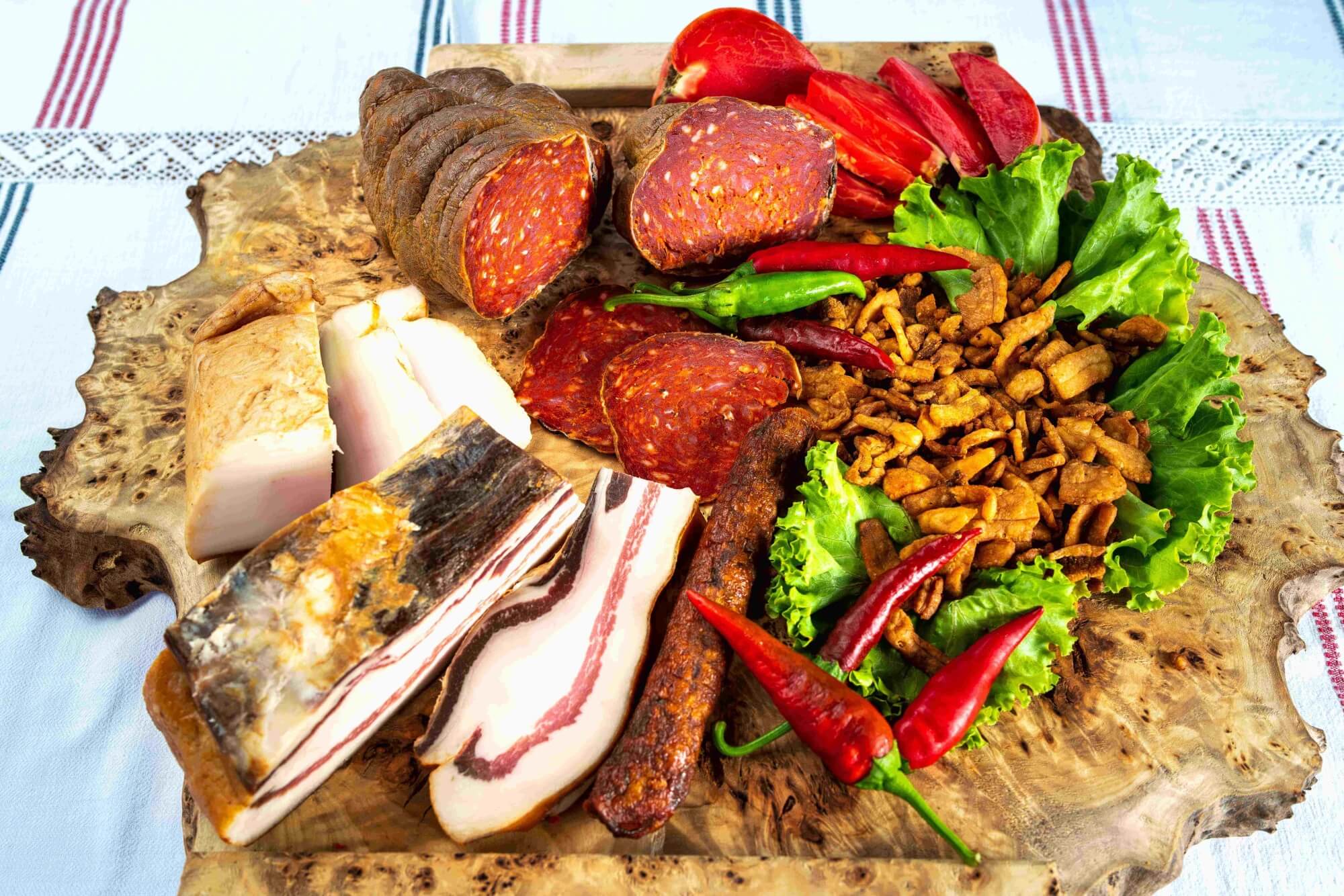 Kulen, čvarci and other specialties at Baranjska kuća © Denis Despot
Kulen, čvarci and other specialties at Baranjska kuća © Denis Despot
That's interesting. In some cases, it might be like two different worlds colliding - people who work in a traditional industry and a traditional environment having to adapt to a very modern way of operating. There's also another potential collision when providers learn of the expectations within modern tourism. Because these people can no longer just work in agriculture. To operate in Seoski Tourism, you're also very much expected to also be a host.
Yes. All of our current service providers who are successful within Seoski Tourism are also great hosts. It's essential. You can see it in almost all of the reviews for this kind of tourism. Guests come for the food and drinks and surroundings, yes. But, what they value the most, what they remember the most, is the host part of the experience. On the estates of Croatian Seoski Tourism, guests are welcomed like family. Across all of Croatian tourism we are expected to be good hosts. It's part of our reputation and the reason why many people come here from all over the world. In Seoski Tourism, it is vital we live up to those expectations.
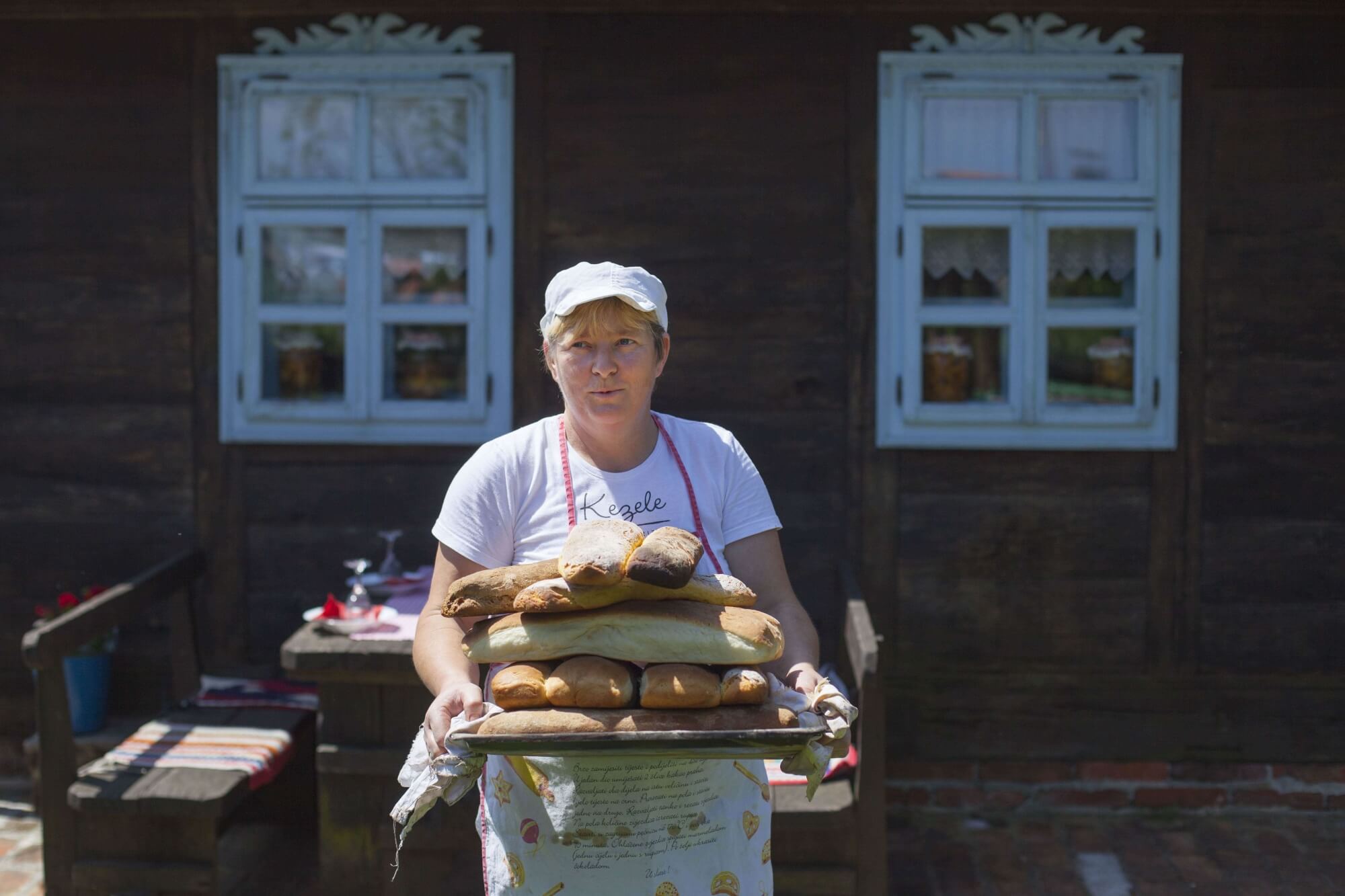 Kezele family farm © Davor Konjikušić
Kezele family farm © Davor Konjikušić
Another aspect of this, which is a more recently-observed element, is that visitors often want an insight into the actual lives, even the personalities of their hosts. They want not only to taste the homemade sausages you make, but they also want to know how you do it, where you do it, how you learned to do that. When they go to Spain, they want to know how the people there make their wine. And, when they come to Croatia, they want to learn how we do it here.
So, all in all, those of us in Seoski Tourism are really busy. We are in agriculture, yes, but we are also in tourism and we are also online. With this more recently-observed aspect, we will need to try and devote even more time to our hosting. It can be difficult to balance the demands on your time. But, in our workshops, we are trying to persuade people to talk more about themselves, their lives, their cultural heritage. And, if there isn't time to do everything themselves, then to involve different and often younger generations of the family. Sometimes within the hosting or alternatively just with the online promotion and presence.
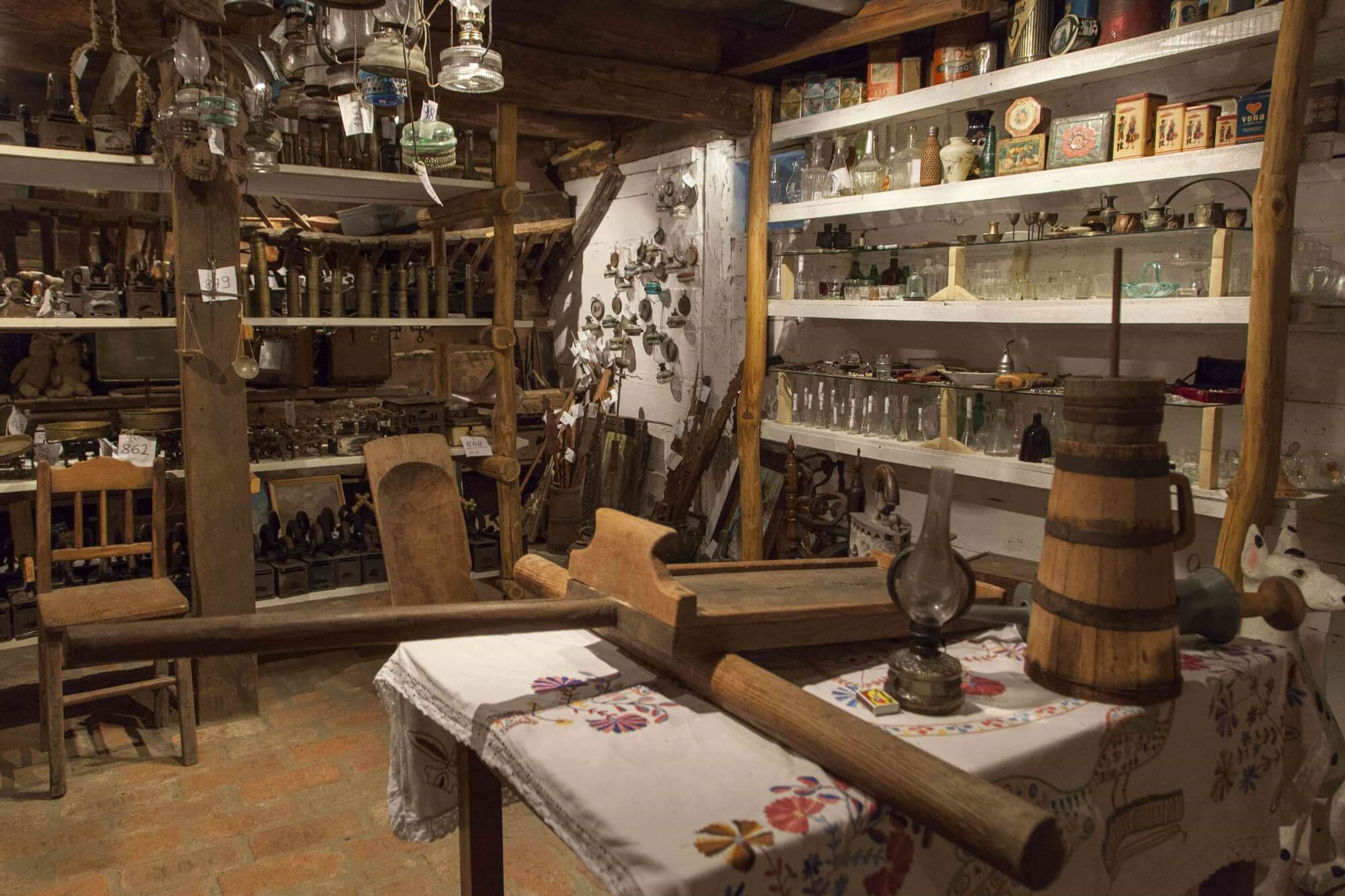 Kezele family farm ethno collection © Davor Konjikušić
Kezele family farm ethno collection © Davor Konjikušić
I've visited some family farms that were right at the start of their journey with Seoski Tourism and they seemed surprised that I was at all interested in what they do and how they do it. I think maybe they thought I was a bit crazy.
Yes, that is a response we sometimes also see at first. I think it's because our generation takes a lot of things for granted. We sometimes think that what we do is just what we do. We are not so good at showcasing it. “Why would I show someone how I make my cheese? I make my cheese like my grandmother used to make it” But, for those who open their doors to Seoski Tourism, inquiries about how they do what they do are only increasing. So, they seem to appreciate how we advise them in the workshops.
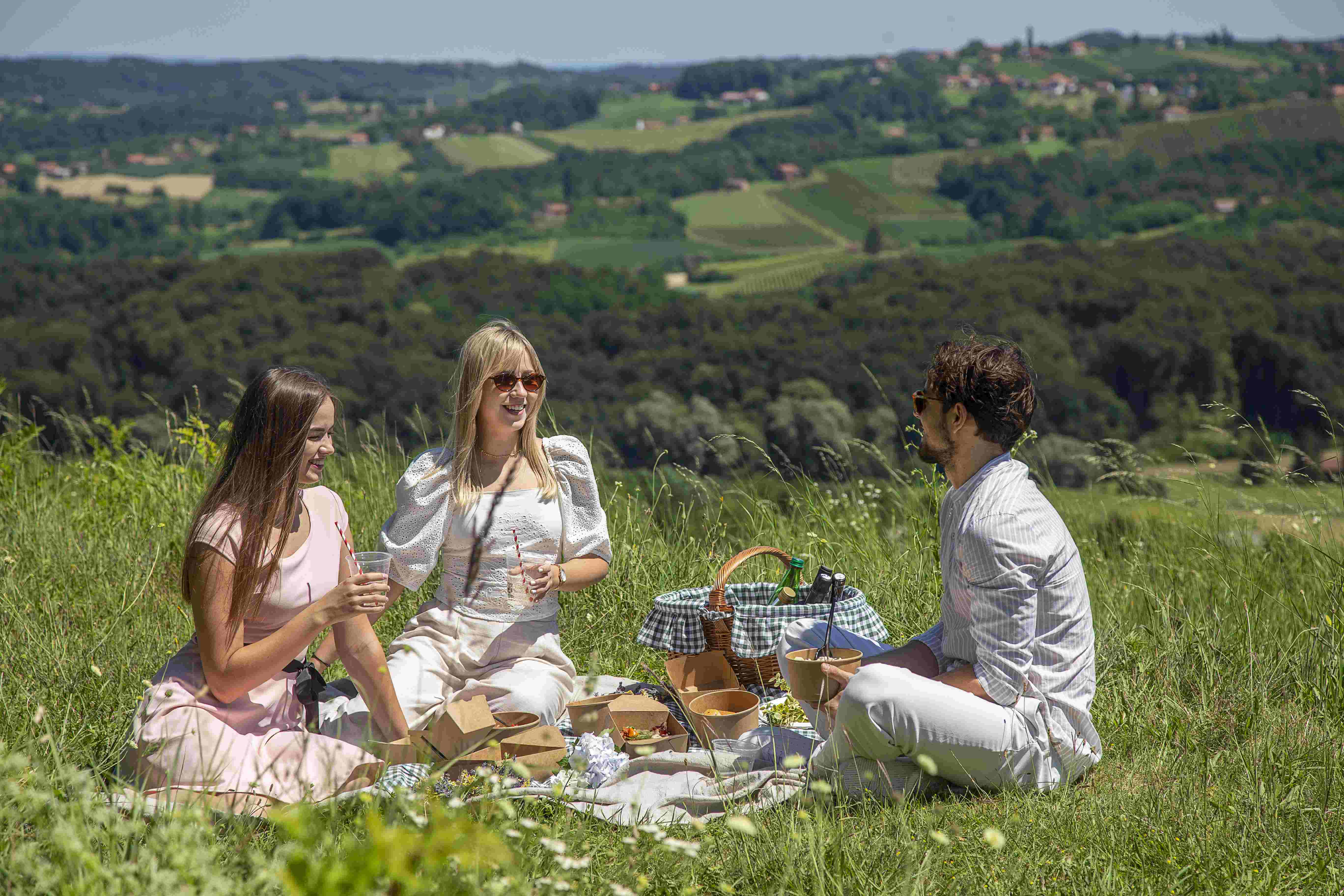 Picnic by Restaurant Međimurski dvori © Igor Nobilo
Picnic by Restaurant Međimurski dvori © Igor Nobilo
We are trying to let our producers know that Seoski Tourism is not just a platform to sell their produce and an overnight stay, but it's a full experience they can sell. There are agricultural farms in Austria that are established in tourism that you must pay only to visit. Of course, that doesn't happen currently anywhere in Croatia, even though some of our Seoski Tourism estates have sections that look like museums.
Some of these aspects are very new. And the feedback is great. I truly believe there are hidden treasures to be discovered in some Croatian villages. We are here to tell that story.
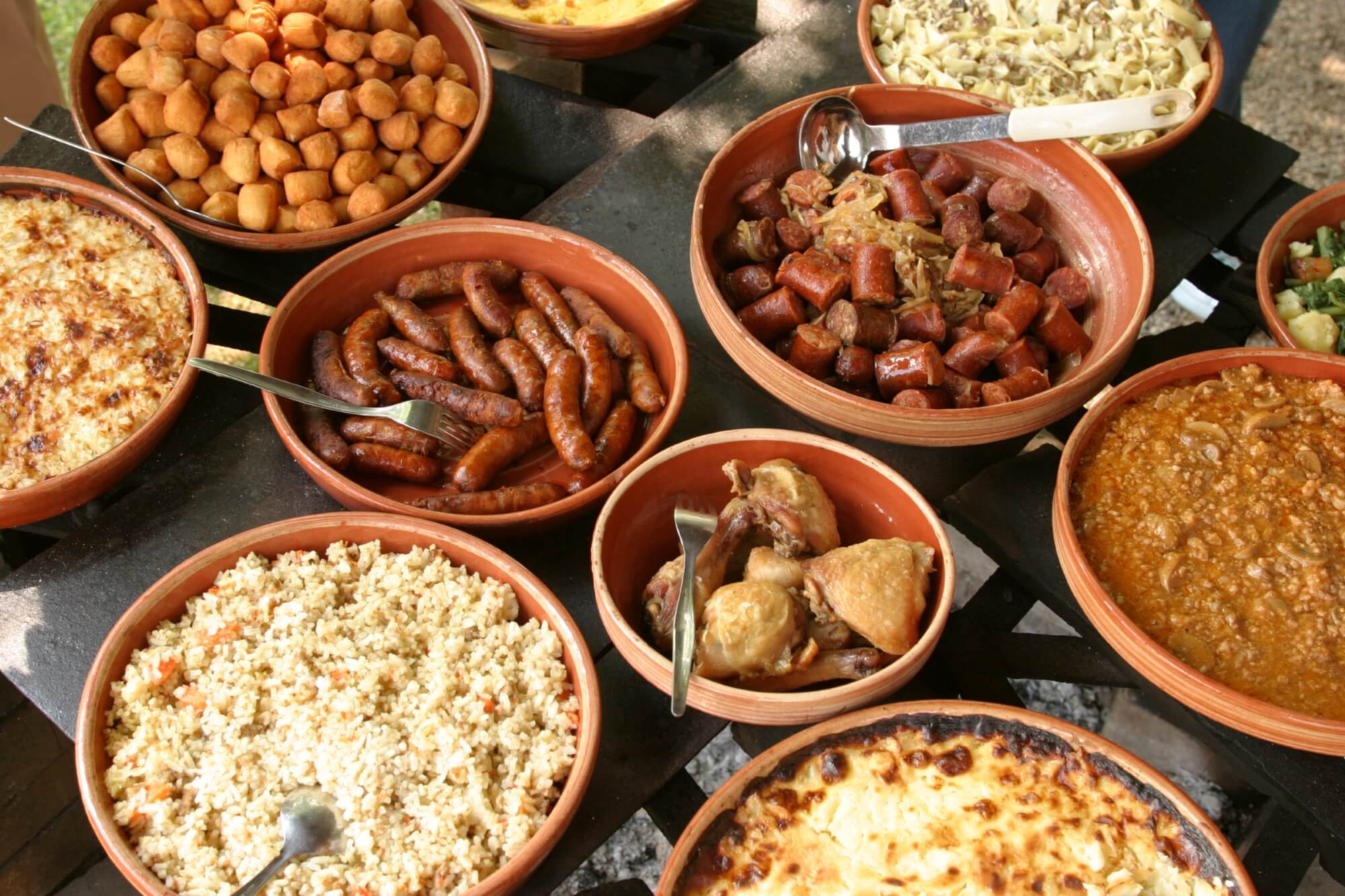 Selection of food from a Slavonian village © Mario Romulić
Selection of food from a Slavonian village © Mario Romulić
What is so rewarding about Croatian Seoski Tourism that international visitors would want to go to a traditional farm in some inland village instead of lying on the beach in Dalmatia for 14 days?
People come because they really want to see a different side of Croatia. And, there are many different aspects of Croatia to discover – not just Seoski Tourism, but also National Parks and Nature Parks. All of our current trends show us that more and more tourists are willing to come inland from the coast or to explore a different part of Croatia – inland Istria, for example, or continental Croatia.
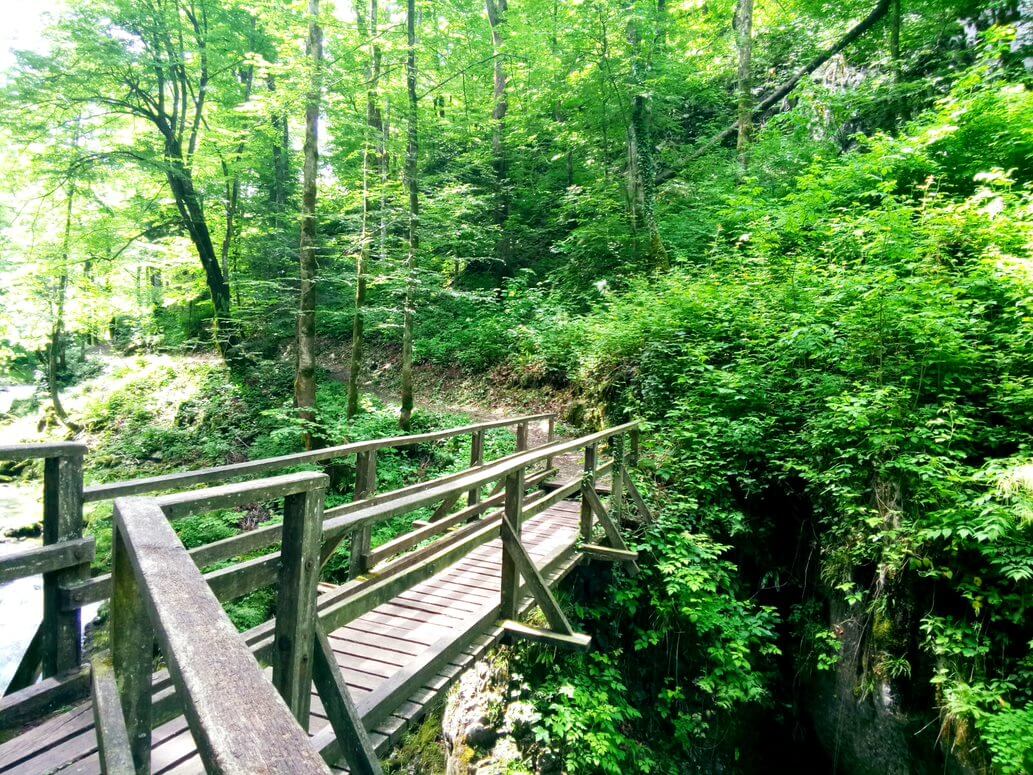 Kamačnik river canyon © Aleksandra Kuratko Pani
Kamačnik river canyon © Aleksandra Kuratko Pani
They really want to try authentic, local food. They want to eat healthy, to know what they are eating and how it is made. And, they want to experience flavours that are different from the usual ones they get from the supermarket.
 Traditional Međimurje table at Etno restaurant Međimurski dvori
Traditional Međimurje table at Etno restaurant Međimurski dvori
Also, I would say that with Seoski Tourism, people get to know better an authentic version of Croatia and its culture. It's a story we hear very often from our members. Some of them are visited by large groups from cruisers. These are people who might be on a cruise on the Adriatic and who journey inland for a day trip. Or, it might be a group who are cruising the Danube and disembark to visit a family farm in Slavonia, Baranja or Srijem.
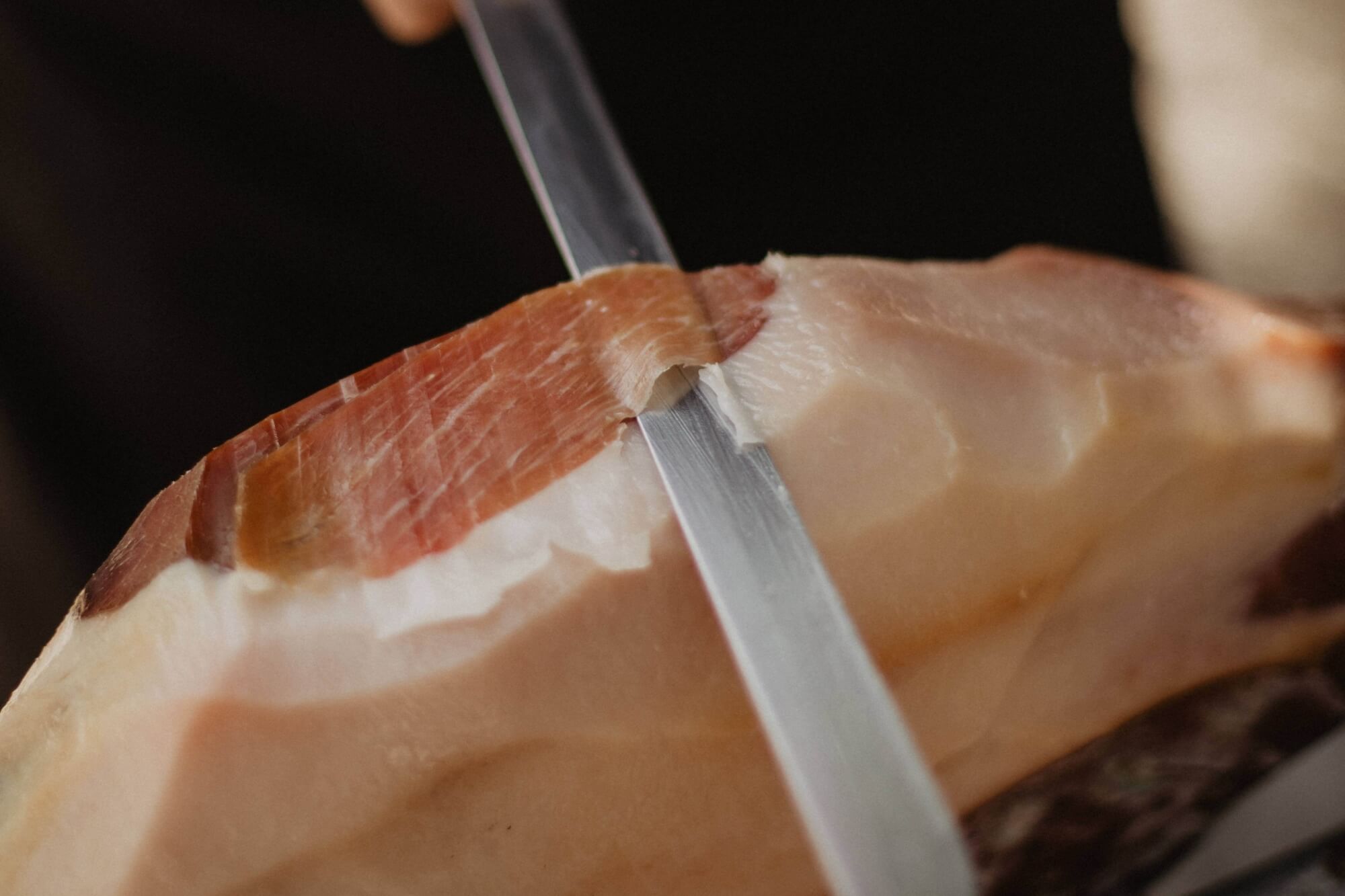 Prosciutto from Drniš at Agrotourism Kalpić © Ivana Kalpić
Prosciutto from Drniš at Agrotourism Kalpić © Ivana Kalpić
When they visit farming estates on day trips, it's very often a huge 'wow' moment for them. For many, in their minds, Croatia is simply sun and sea. And that's not entirely their fault. We, as a country, have done very little until now to promote alternative sides of Croatia. The visitors experience these wow moments because of the hospitality they receive and because of the tangible aspect of the visit. This is a modern aspect – people want to touch things, know how things feel, taste, smell. They want to ride on horses or feed them. Or take part in cultural activities. These parts of a visit to Seoski Tourism are very difficult to experience anywhere else.
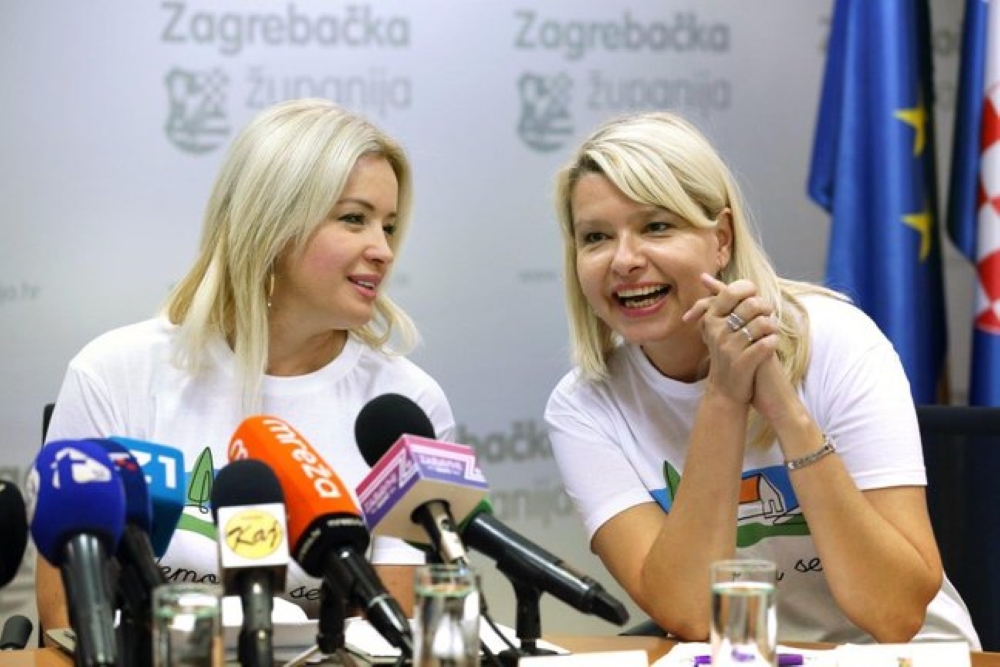 (left) Ivana Alilović, director of Zagreb County Tourist Board (right) Aleksandra Kuratko, secretary of Udruga ruralnog turizma Hrvatske (Croatian Rural Tourism Association) © Zagreb County
(left) Ivana Alilović, director of Zagreb County Tourist Board (right) Aleksandra Kuratko, secretary of Udruga ruralnog turizma Hrvatske (Croatian Rural Tourism Association) © Zagreb County
Udruga ruralnog turizma Hrvatske's online Seoski Tourism workshops begin today and their physical workshops continue next week in Istria.
If you'd like to read more about rural tourism in Croatia, then look here
Istra Inspirit: Discovering Istria's History and Secrets by Bike and Train
October 31, 2021 - Through an innovative way of relating the history and secrets of the region, the Istra Inspirit project offers a journey back in time for its participants to discover more about the fantastic history of Istria through the chronicles of famous characters aboard a train.
As Turističke Priče reports, Travel Istria has taken on a new dimension through innovative and sustainable product Discover Istria by bike and train. The Istra Inspirit experience took place in a renovated train adapted for the transport of passengers and bicycles on the Pula-Buzet-Pula route.
The performance was realized in a train on the route Pula-Vodnjan-Svetvinčenat-Kanfanar-Pula, where the performers of Istra Inspirit traveled through time with the time traveler Maris and her time machine: a bicycle through stations in Istria.
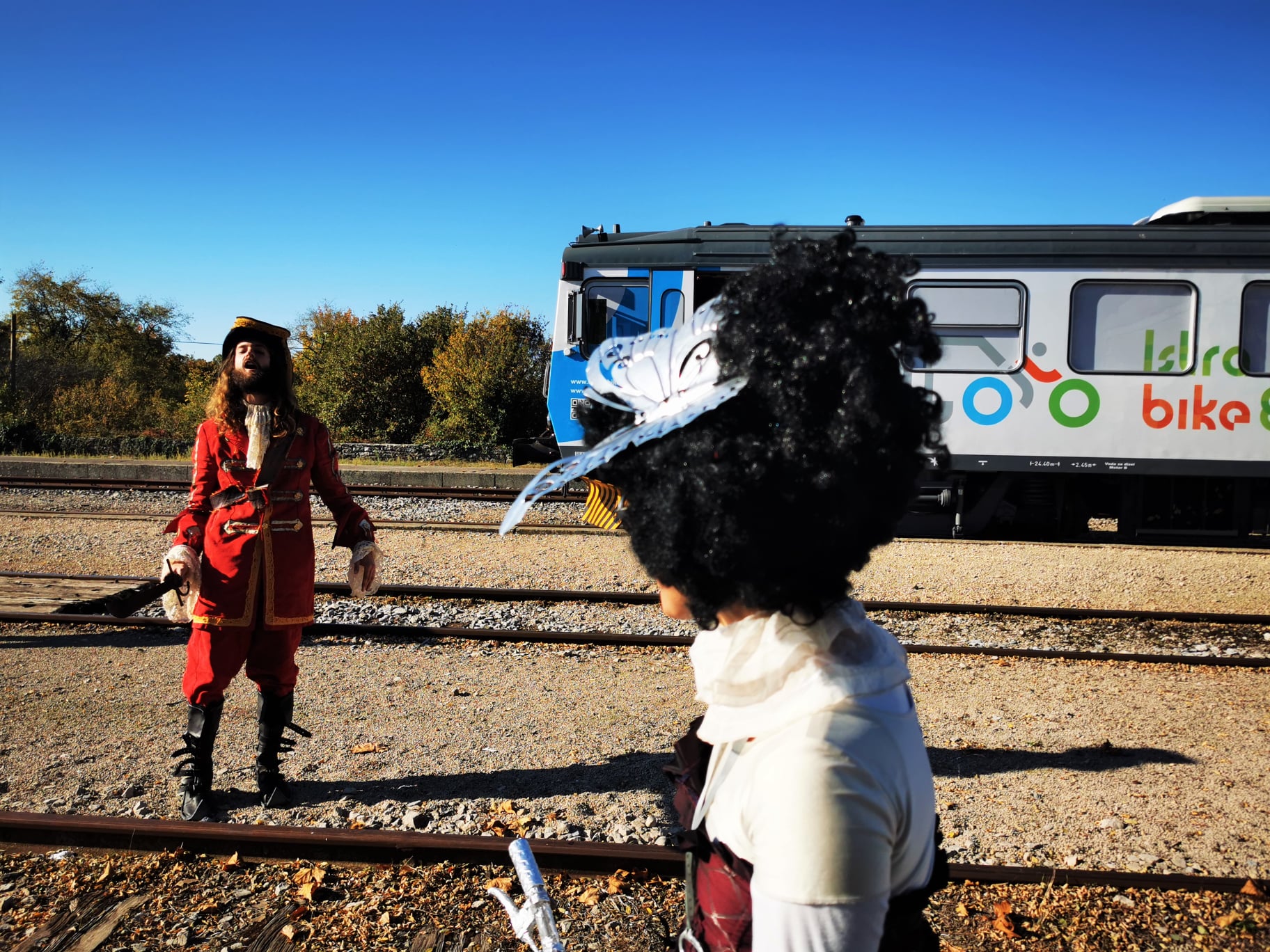
Photo: Istra Inspirit (Official Facebook Page)
Various events from the train carriages intrigued the audience, and selected historical characters, as well as fictional ones, were related to the locations where the train passed and described the importance of Istrian railways and the history of the locations with anecdotes of characters. Some hid in the train fleeing the law, some were passengers, some boarded the station. The performance connected the topics of the Istrian railways and their construction, their importance for traffic development, and the connection of places and cities with cycling and the development of this project.
The first station in Pula was the place where the audience was greeted by Maris, but also by Emperor Vespasian, at whose request the Pula amphitheater was built. In Vodnjan, the mystical Valerie von Windischgrätz, the granddaughter of Emperor Francis Joseph, boarded the train with the intention of killing her husband's mistress. The journey continues to Svetvincenat where the audience was surprised by a character hidden in the train: conductor Slavko.
Kanfanar as the last stop introduced us to the tragic story of the evil fate that befell Dvigrad through the eternal villain Captain Henry Morgan and his enemy Blackbeard, one of the most famous pirate captains in history who will try to hijack the trail.
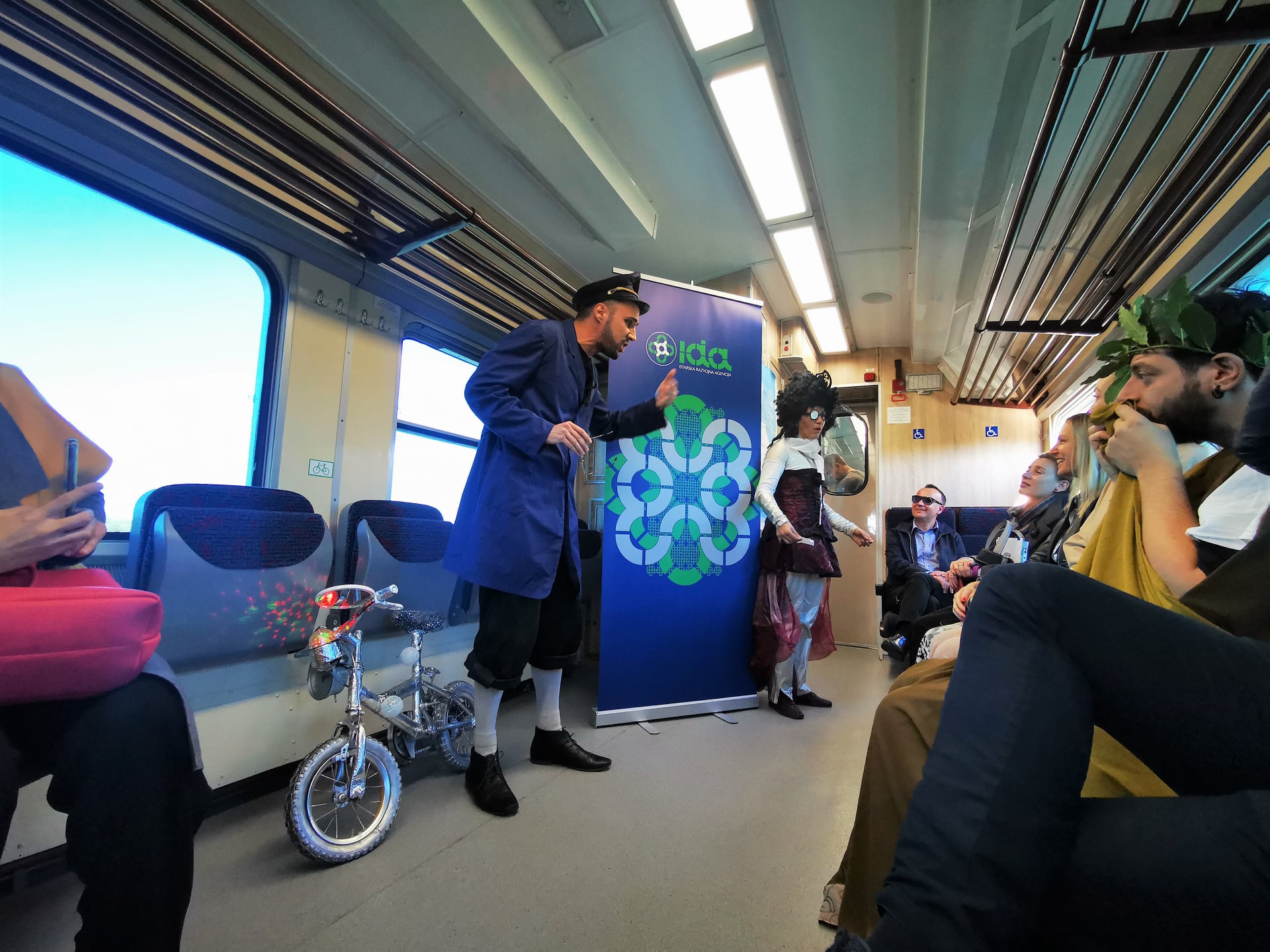
Photo: Istra Inspirit (Official Facebook Page)
The audience embarked on a journey through the past, present and future, and through the Istrian beauties discovered a history that left a strong impression on people and customs in the region.
The experience was directed by Frano Novljan, also in the role of conductor Slavko and Crnobradog, with performers Sedina Cerovac as time traveler Maris, Linda Kliman as Princess Valerija. Sandor Slacki embodied Emperor Vespasian, while the role of Henry Morgan belonged to Karel Stipić.
Istra Inspirit is a project of cultural experience tourism which is implemented within the Istrian Development Tourist Agency - IRTA doo with the support of the Administrative Department for Tourism of the Istrian County. You can find more information about Instra Inspirit through their official website or through their official Facebook page.
For more information and travel tips on the Istrian region, be sure to visit our newly launched Total Croatia portal. Now in your language!
For more on travel in Croatia, follow TCN's dedicated page.
American Lux Tourism Agencies Checking Out Beautiful Istria
October the 7th, 2021 - While Dalmatia and more recently the City of Zagreb have been attractive to American tourists, the gorgeous Istrian peninsula has been somewhat less visited by our friends from across the pond. That could all be about to change with the visit of several American lux tourism agencies to this stunning part of Croatia.
As Poslovni Dnevnik writes, five travel agents specialising in luxury tourism (American lux tourism agencies) arrived in beautiful Istria recently as part of a nine-day FAM trip (Familiarisation Trip) organised by RealCroatia. During their working visit, they will visit local accommodation and service providers, and check out what kind of experience they can offer to their clients.
These American lux tourism representatives have come to visit this part of the country because Istria, unlike Dalmatia and Zagreb, is not yet "on the radar" of the vast majority of guests visiting Croatia from America. In addition to Zagreb and Plitvice, they will be presented with offers in Opatija, Lovran, Motovun, Groznjan, Buzet, Rovinj, Pula, Savudrija, Brijuni and then further inland in Gorski kotar. Pascal Lee, a luxury tourism consultant at West Rock Travel Working, says she wants to see Croatia from a local perspective:
“Several of my clients, experienced world travellers, have recently returned from excellent trips to Croatia. I decided that I had to find out for myself what the secret of this beautiful country was.''
"We're encouraged by the excellent feedback and results of the April tour," stated RealCroatia director Petra Gracin, noting that North America is a market with better paying power than typical Western European guests visiting Istria and Dalmatia.
"The average consumption per passenger is often over 5,000 US dollars," said Gracin, and back in April this year, RealCroatia organised the first trip of travel agents from America to Europe since the global coronavirus pandemic began, when nine agents visited Zagreb, Plitvice Lakes National Park, Zadar, Trogir, Split, Hvar, Peljesac and Dubrovnik.
According to the data available from the Institute of Tourism, American tourists are the largest tourist consumers per capita in the Republic of Croatia, which likely isn't a surprise. In addition, as many as 83 percent of them claim that they will recommend visiting Croatia to their friends, which is something else putting them firmly in the lead. In comparison, this is 13 percentage points more than in the case of Germany and German tourists and as much as 23 percentage points more than in the case of neighbouring Italian guests.
It is expected that in 2022, about 400,000 North American guests will visit Croatia and that they will realise over 1.2 million overnight stays in total.
For more, make sure to check out our dedicated travel section.


